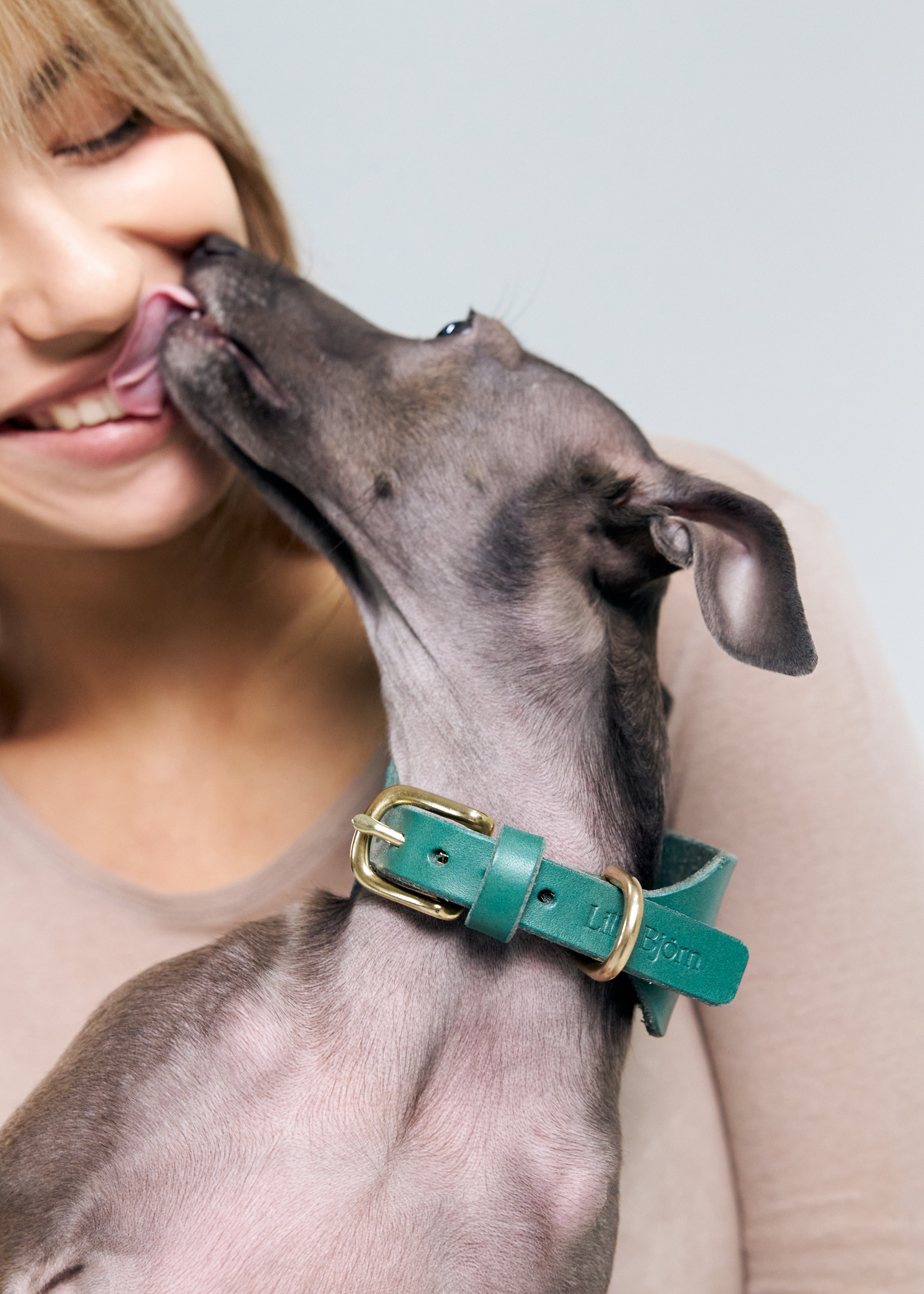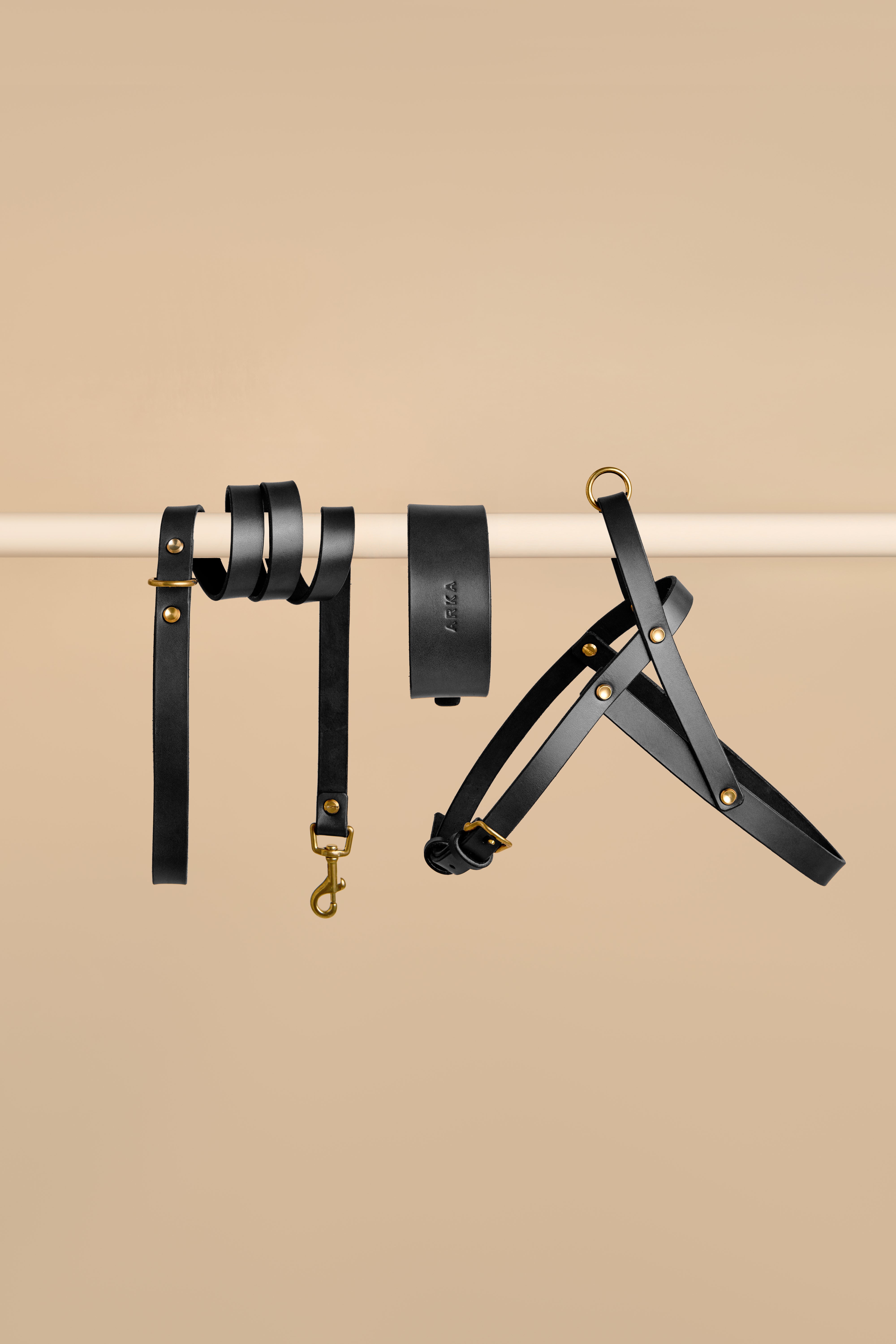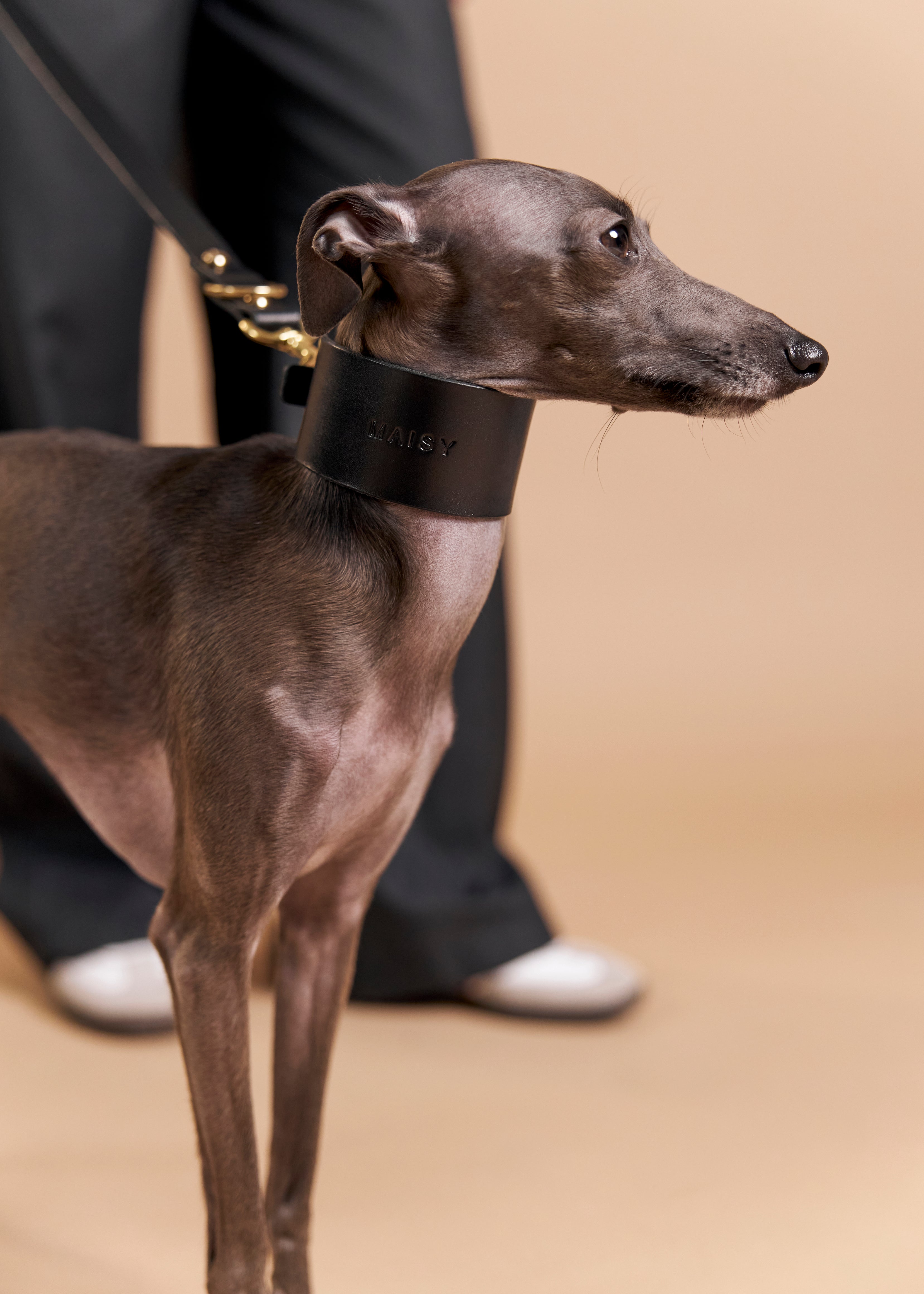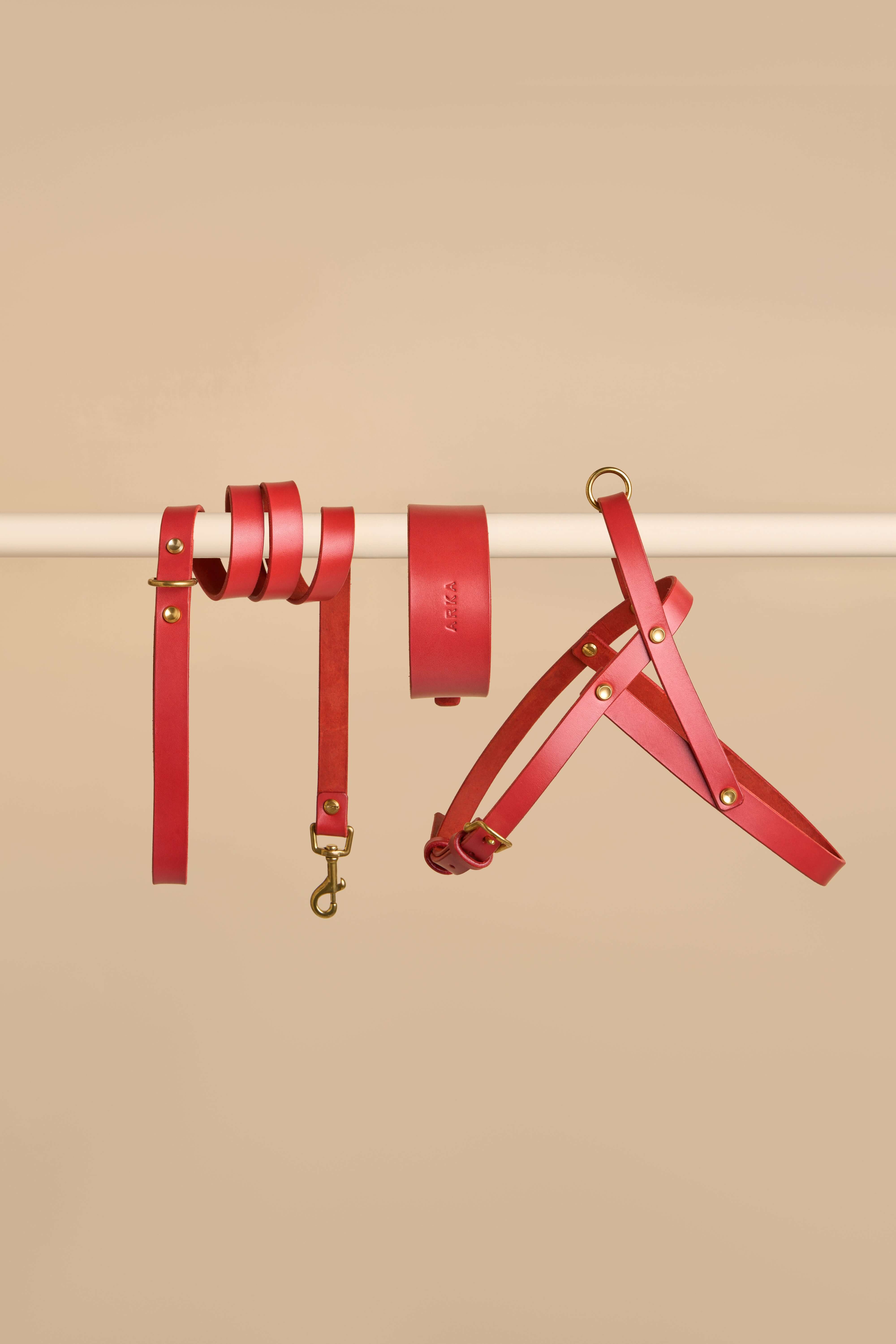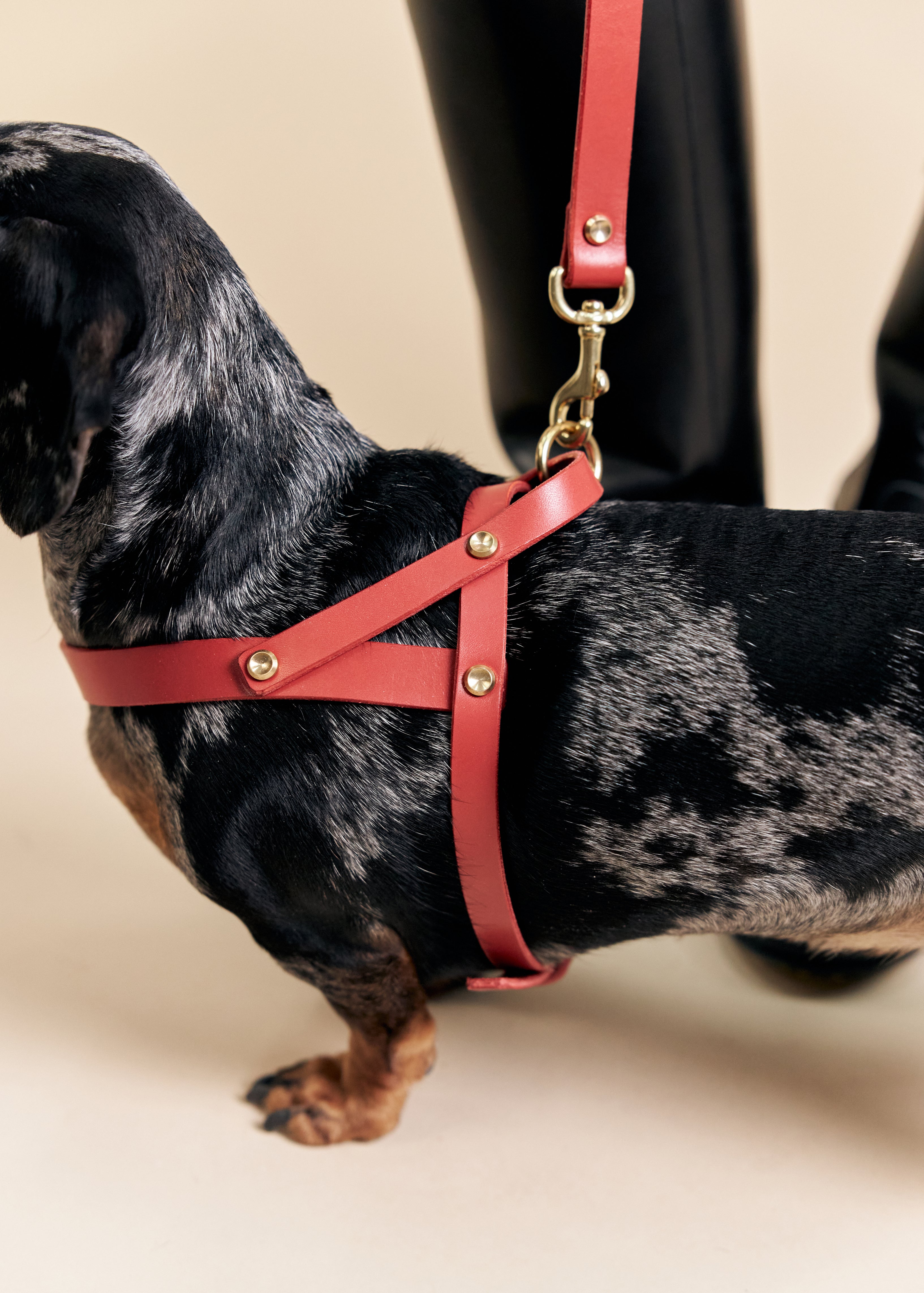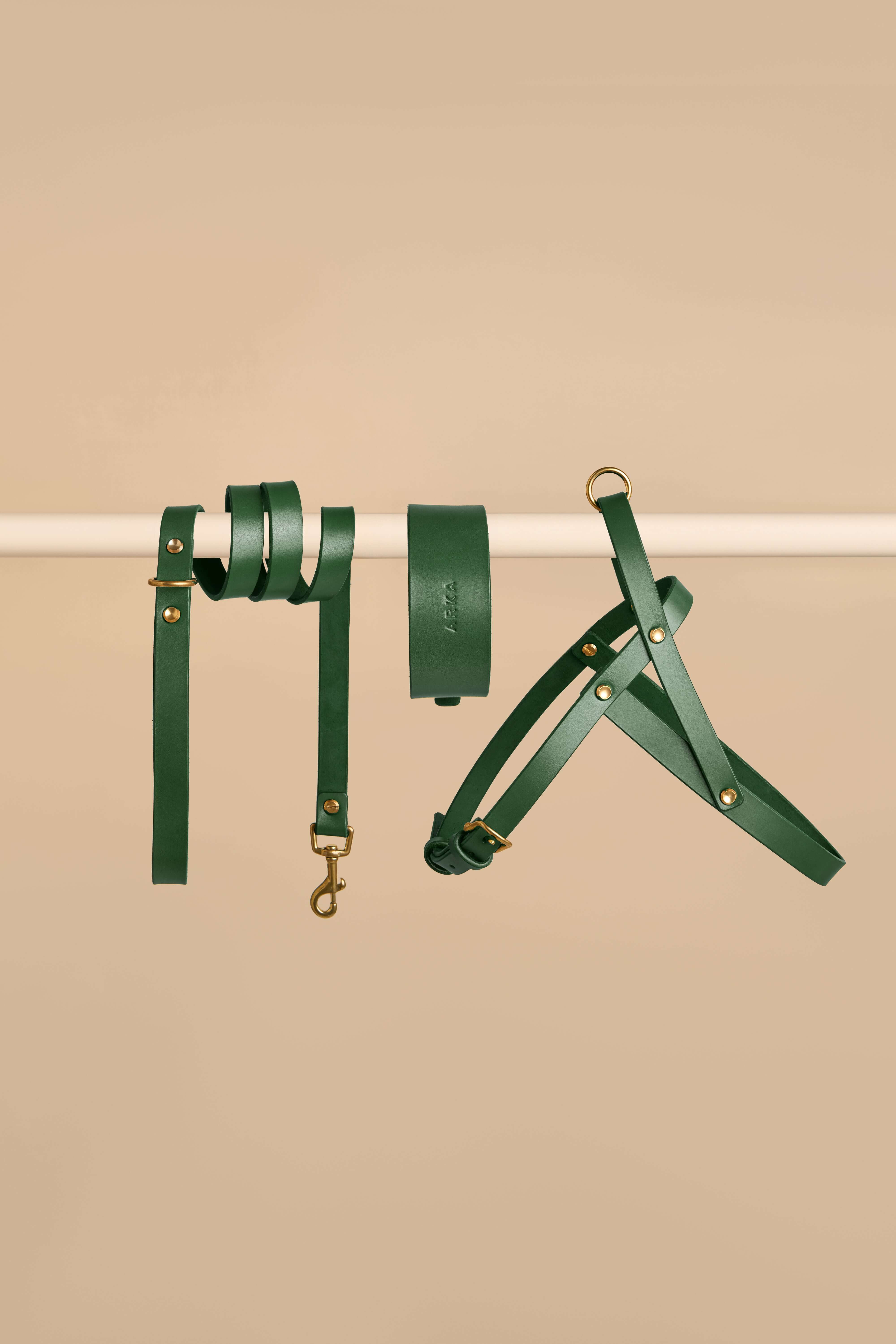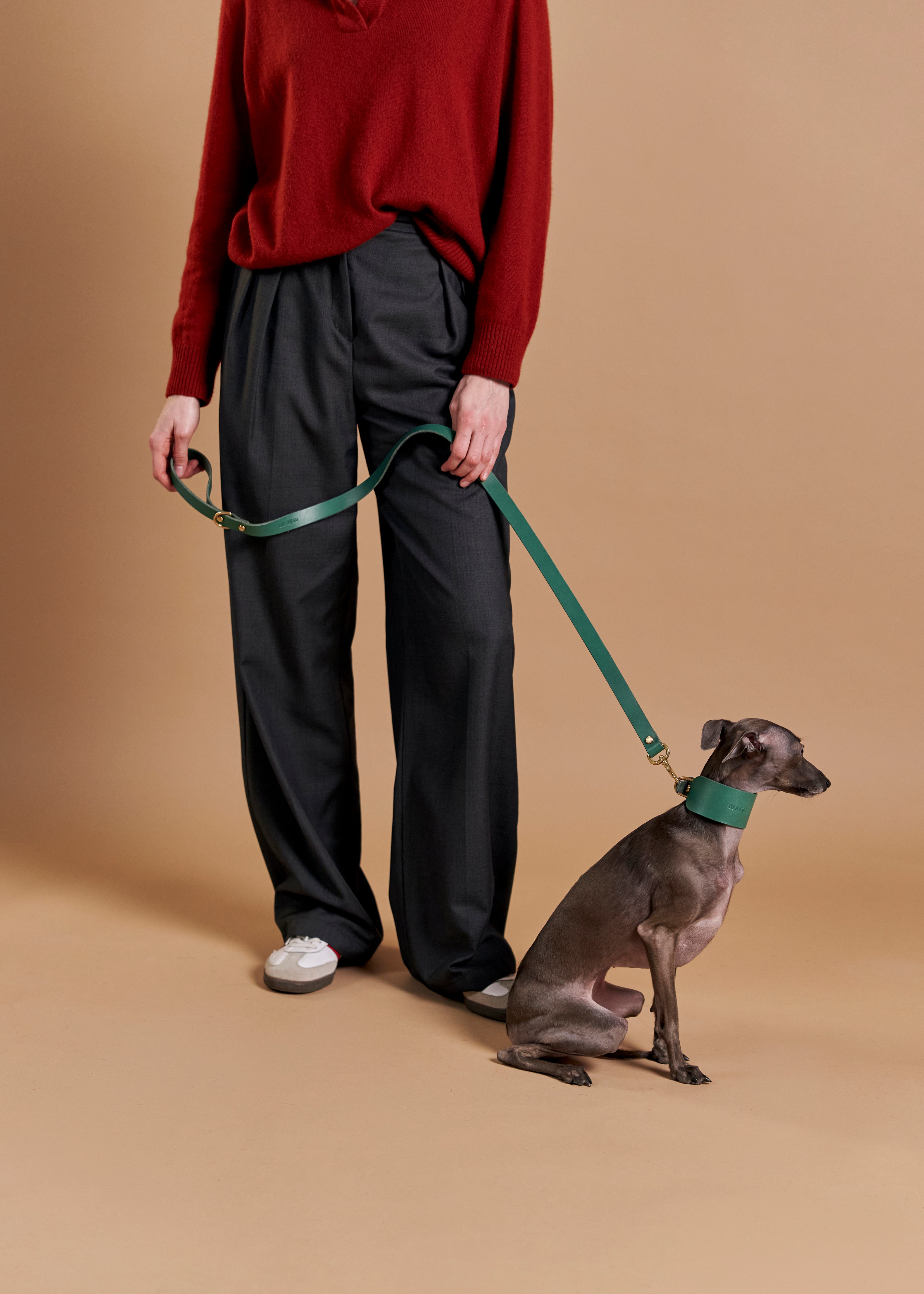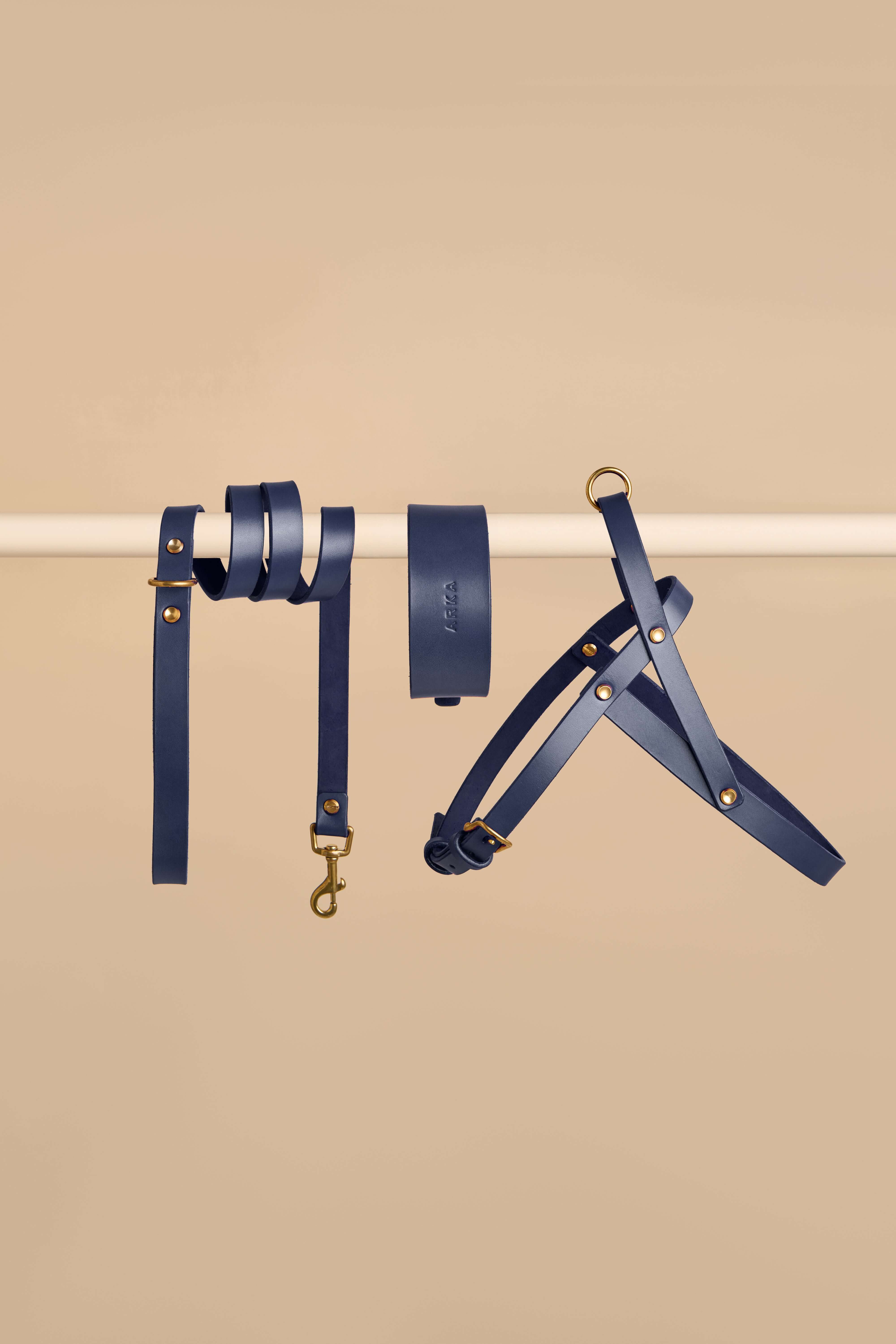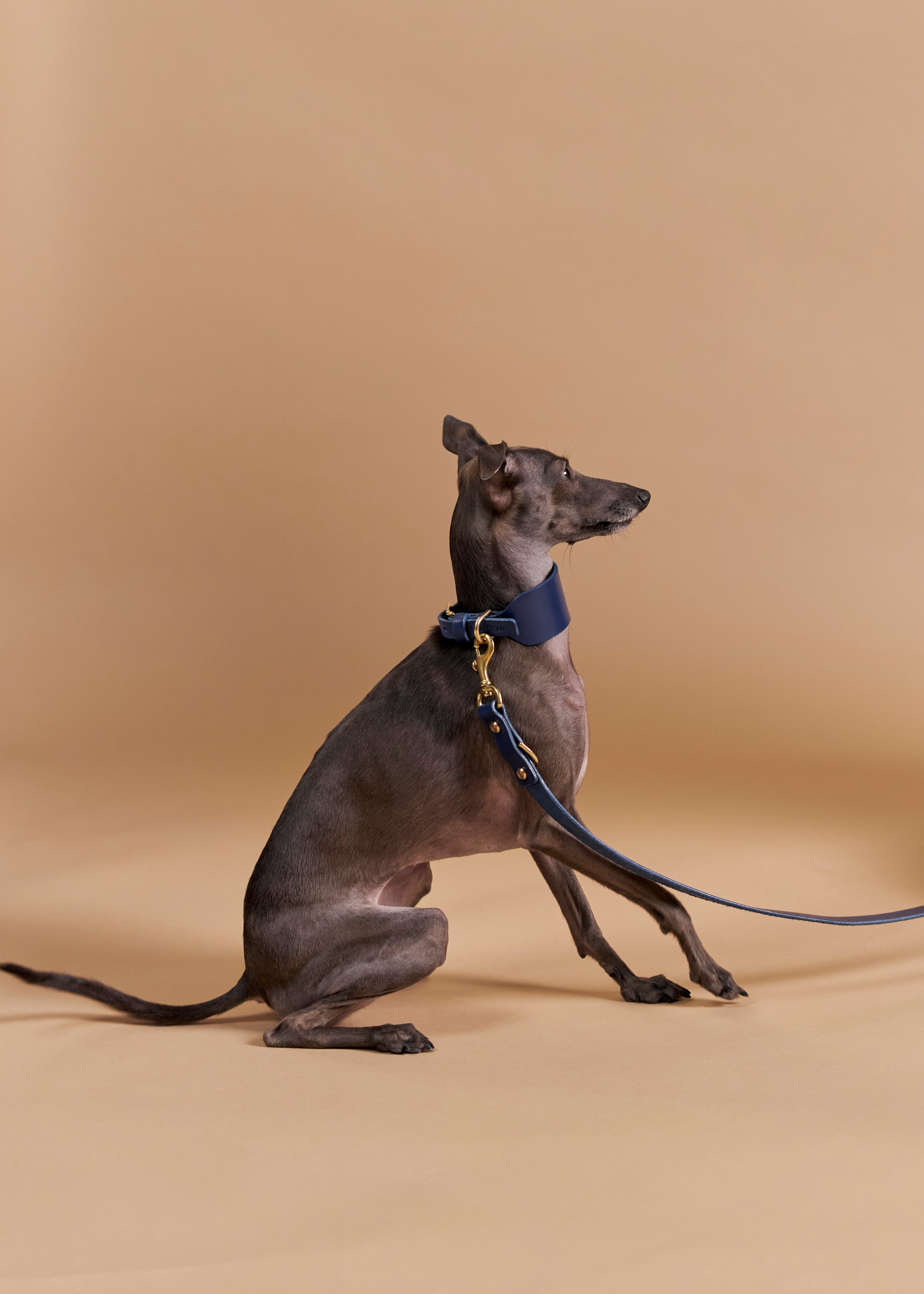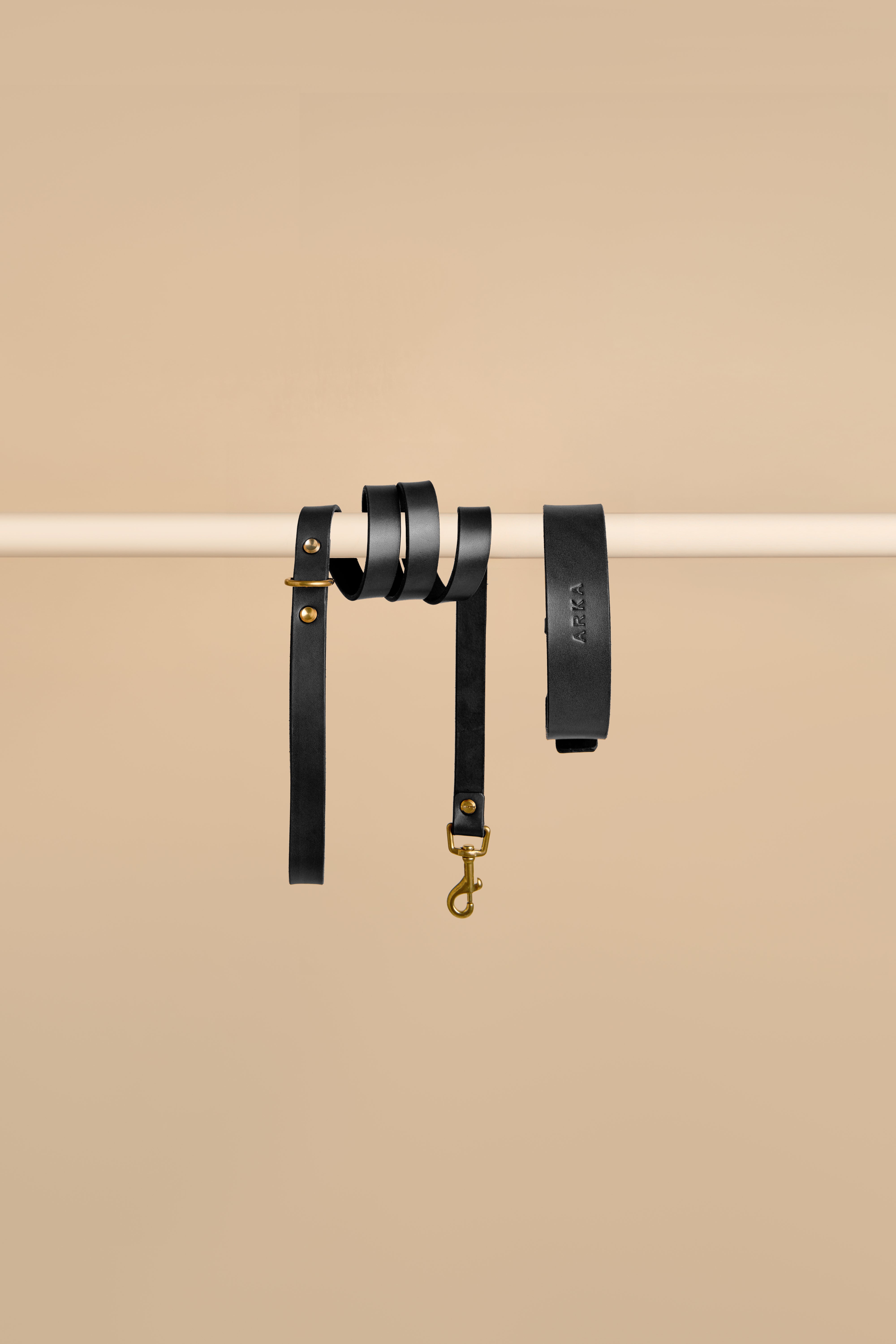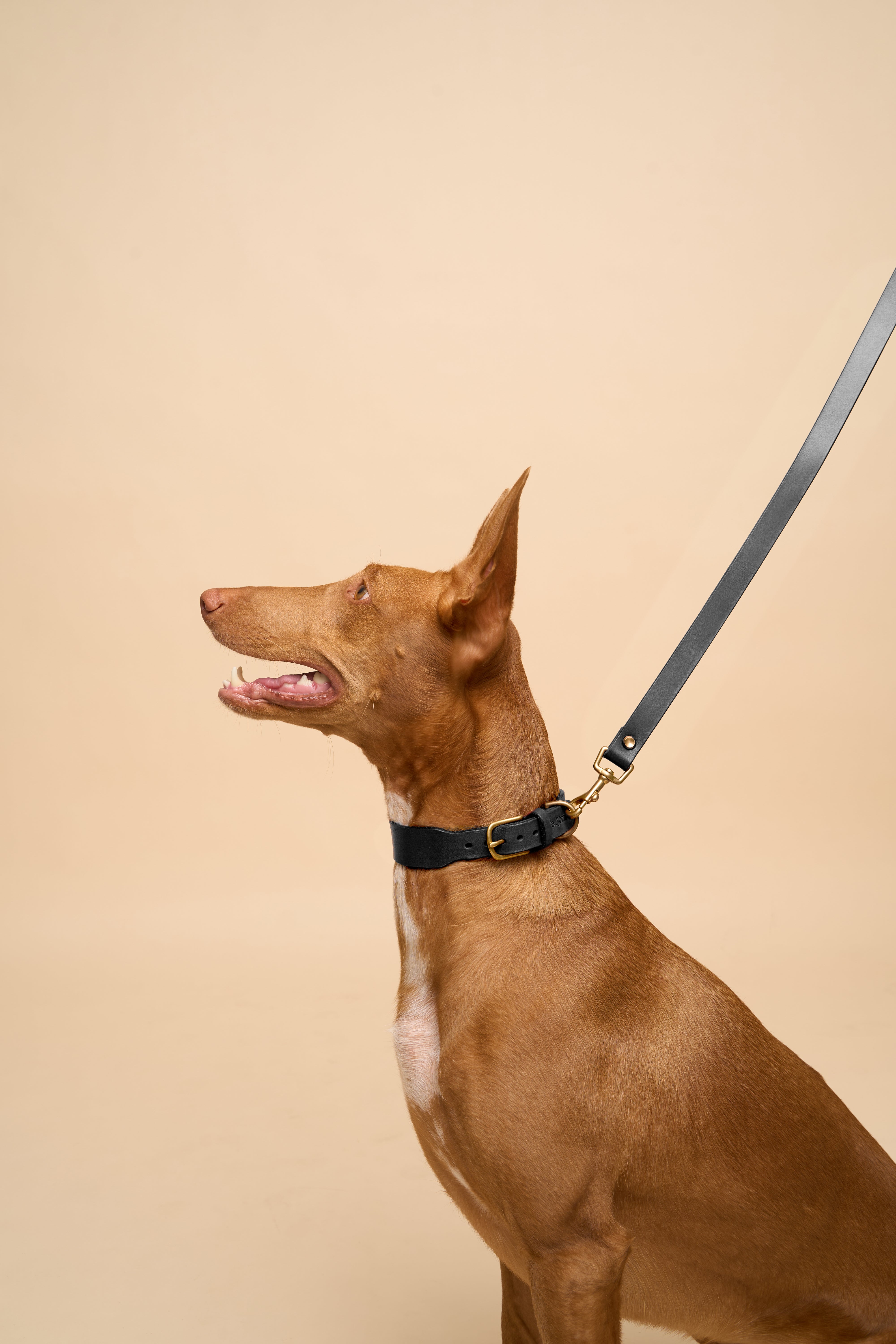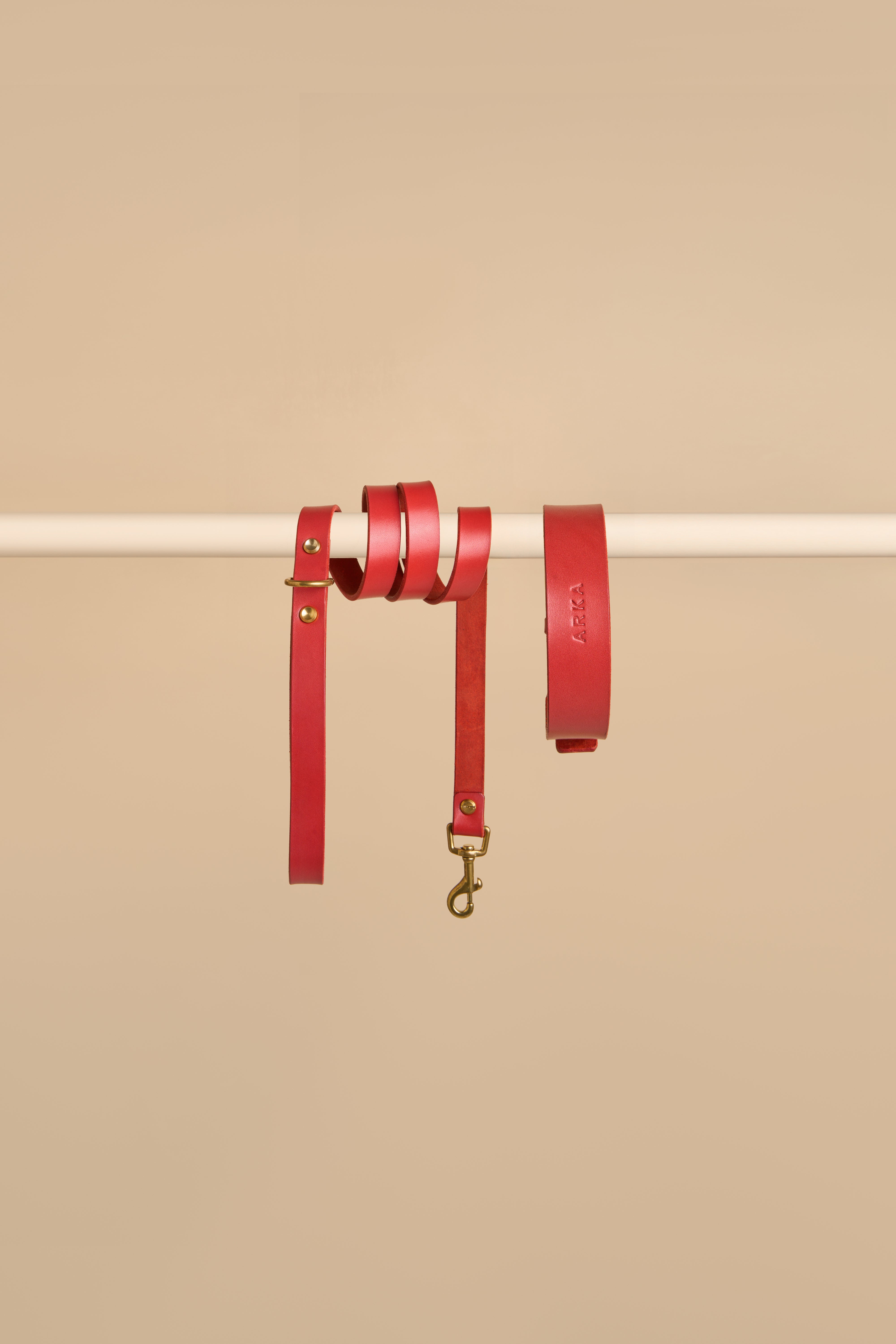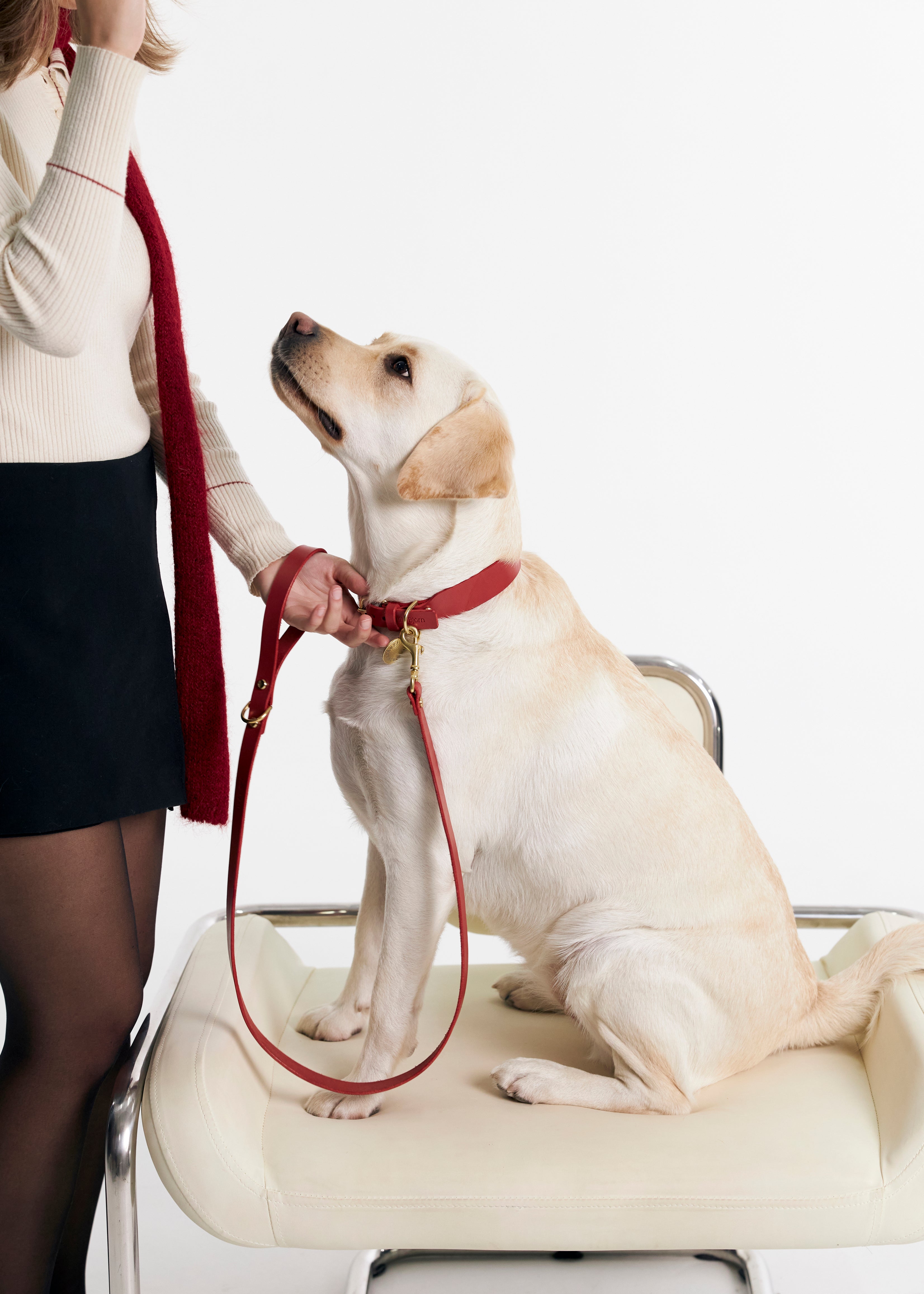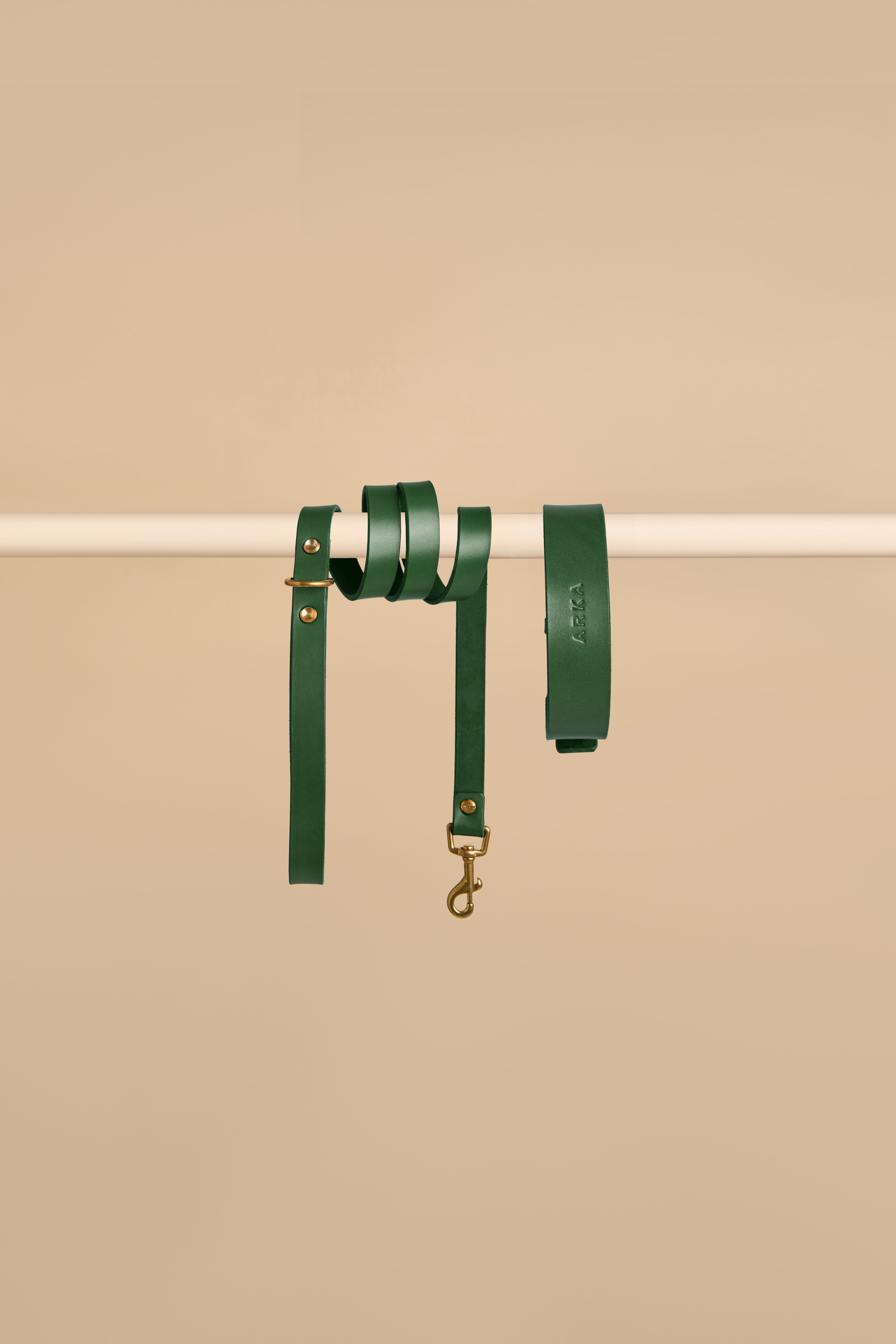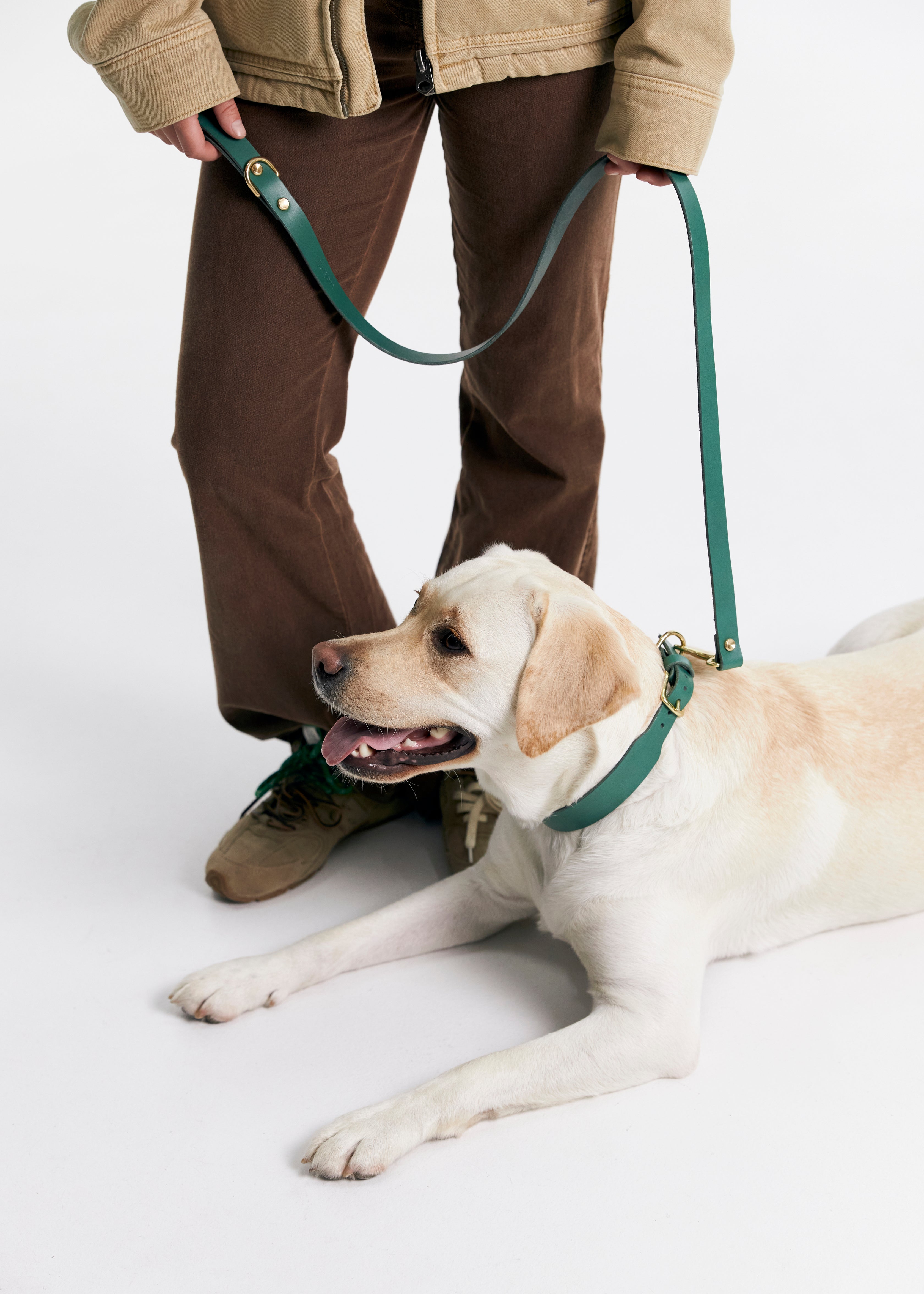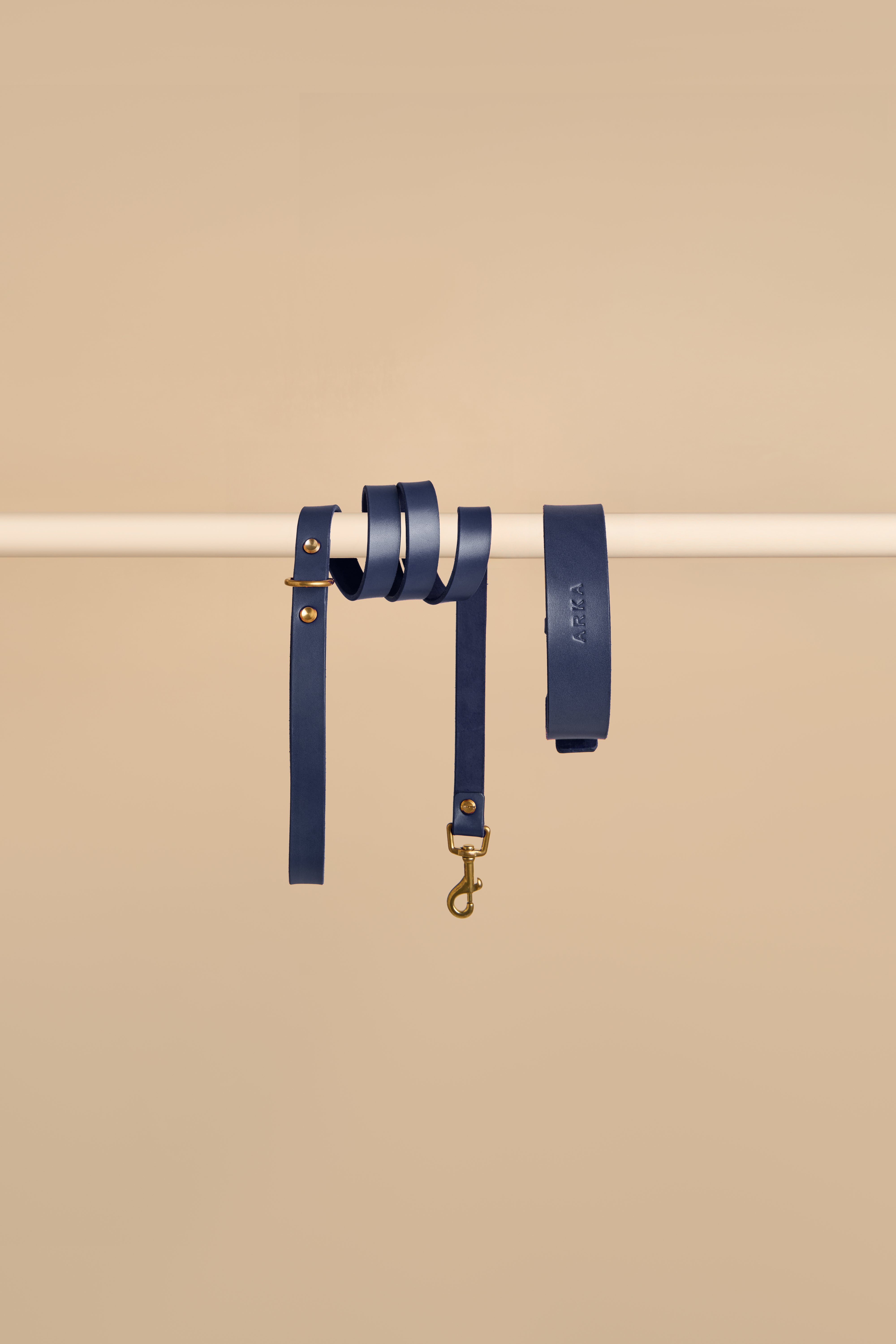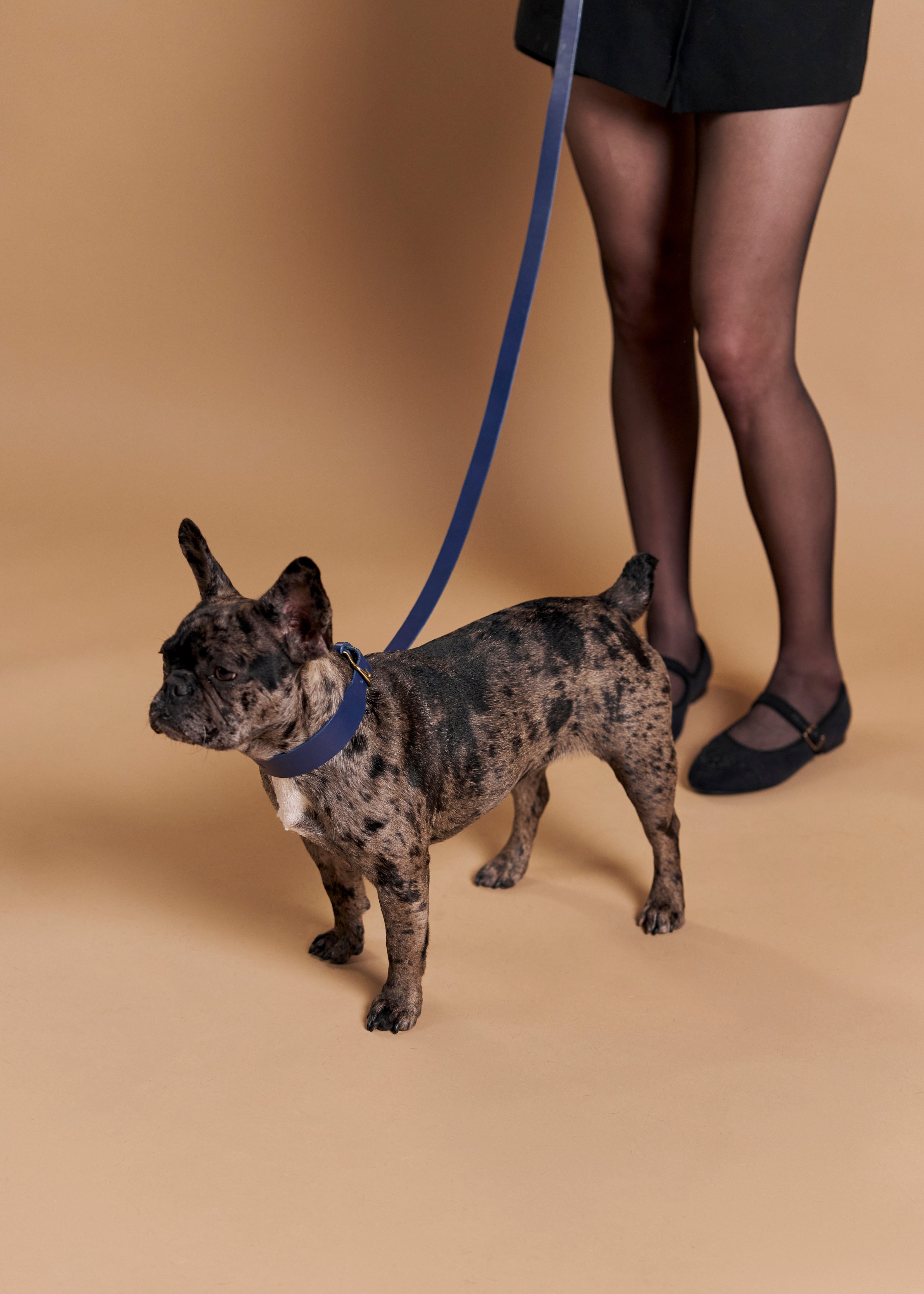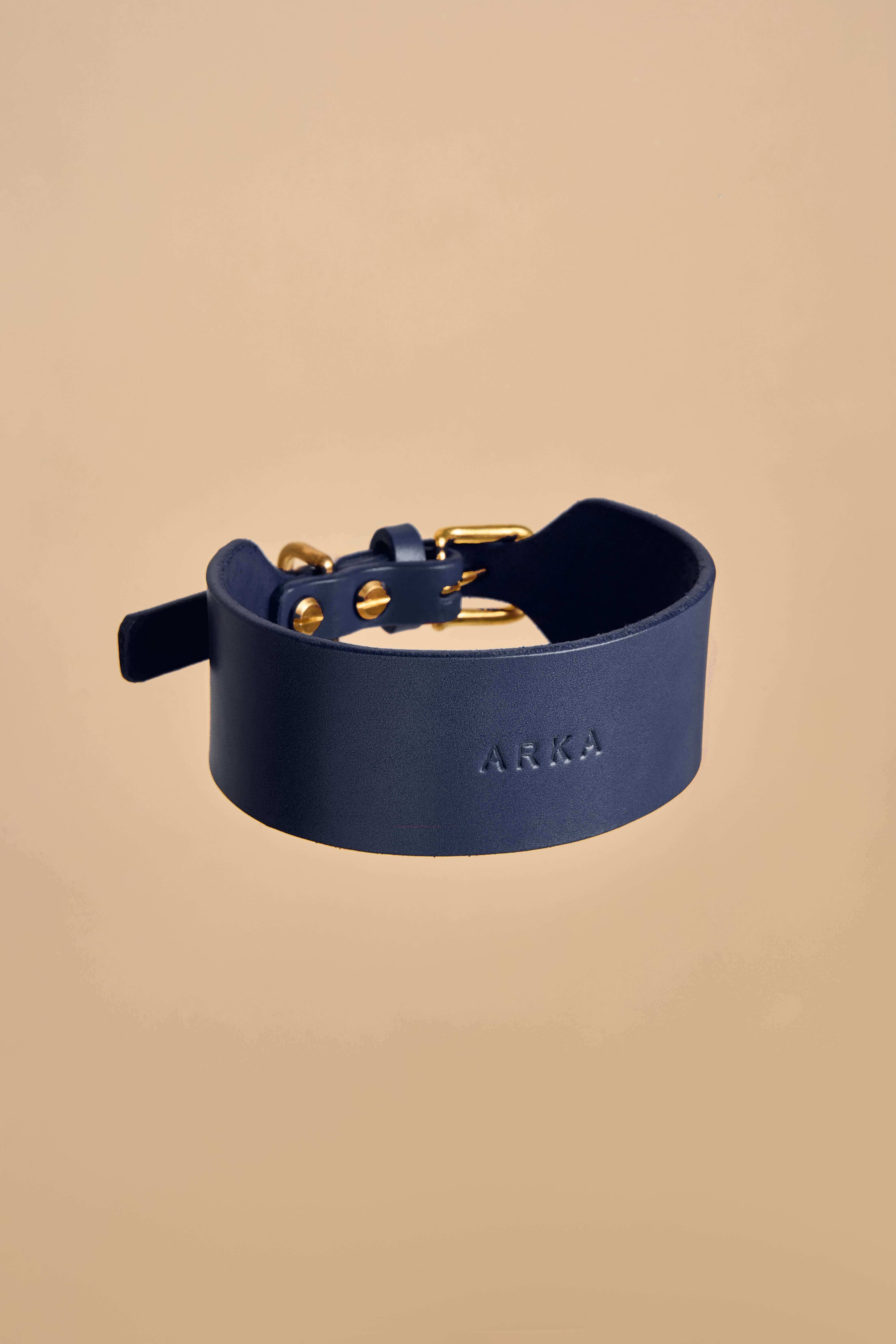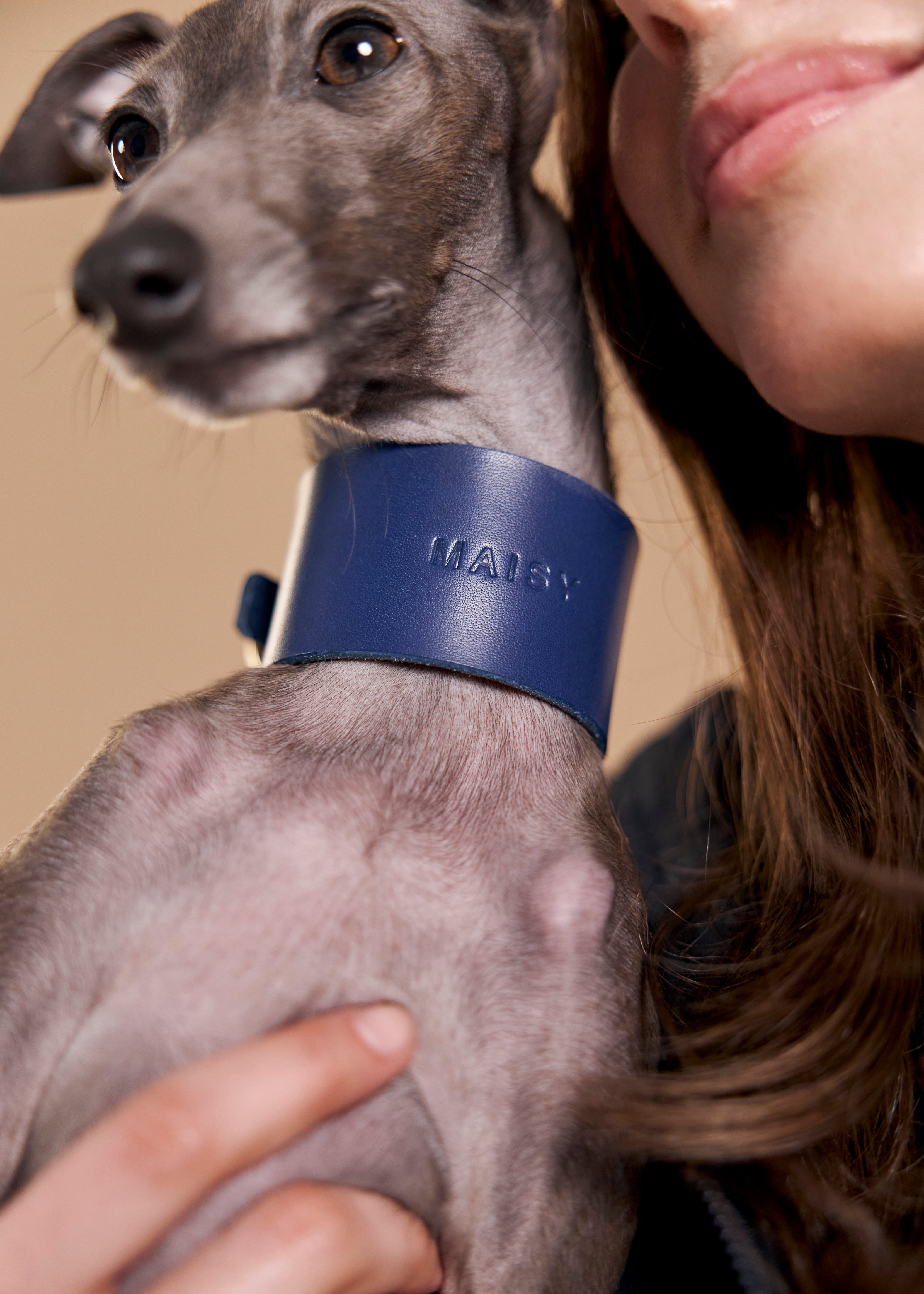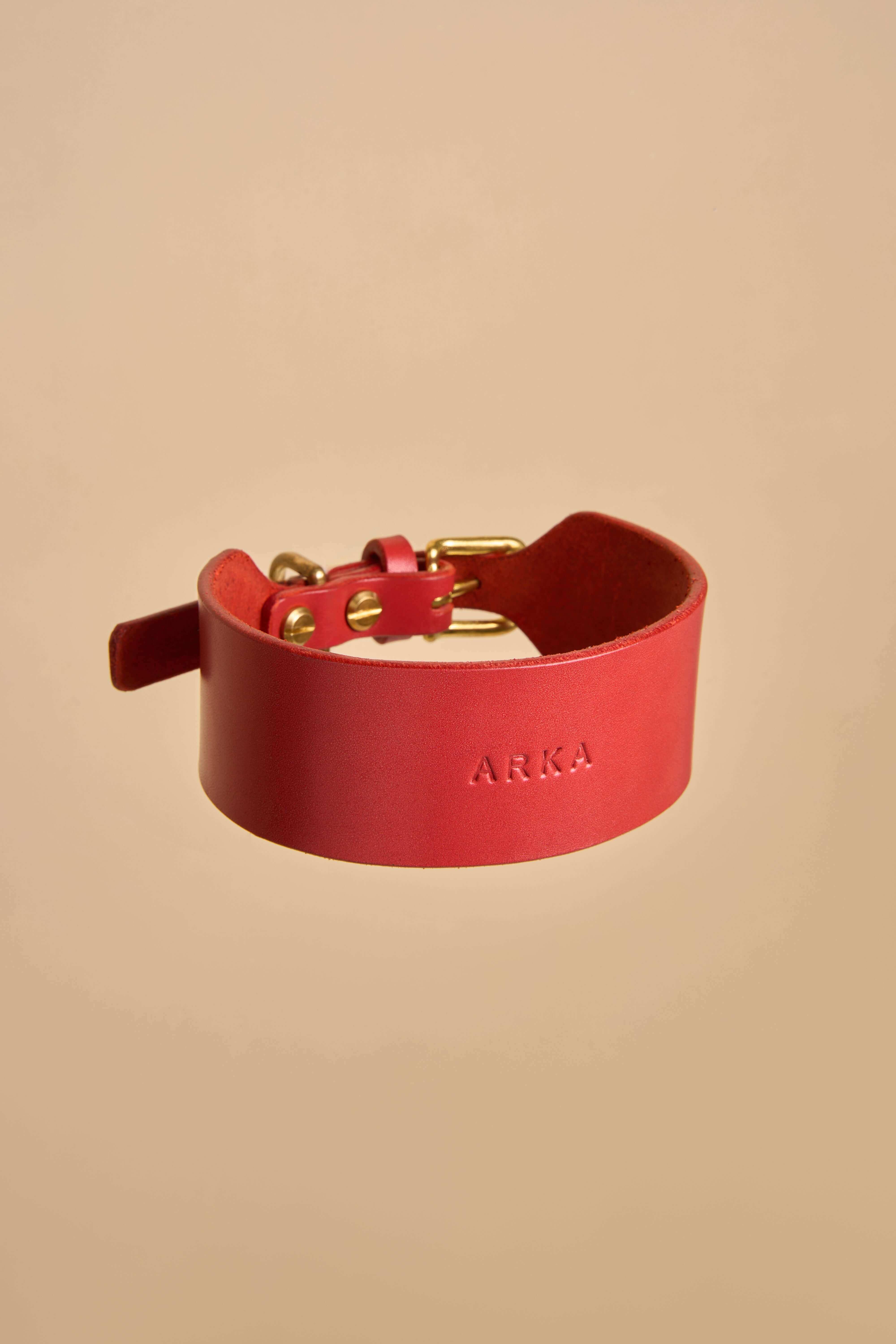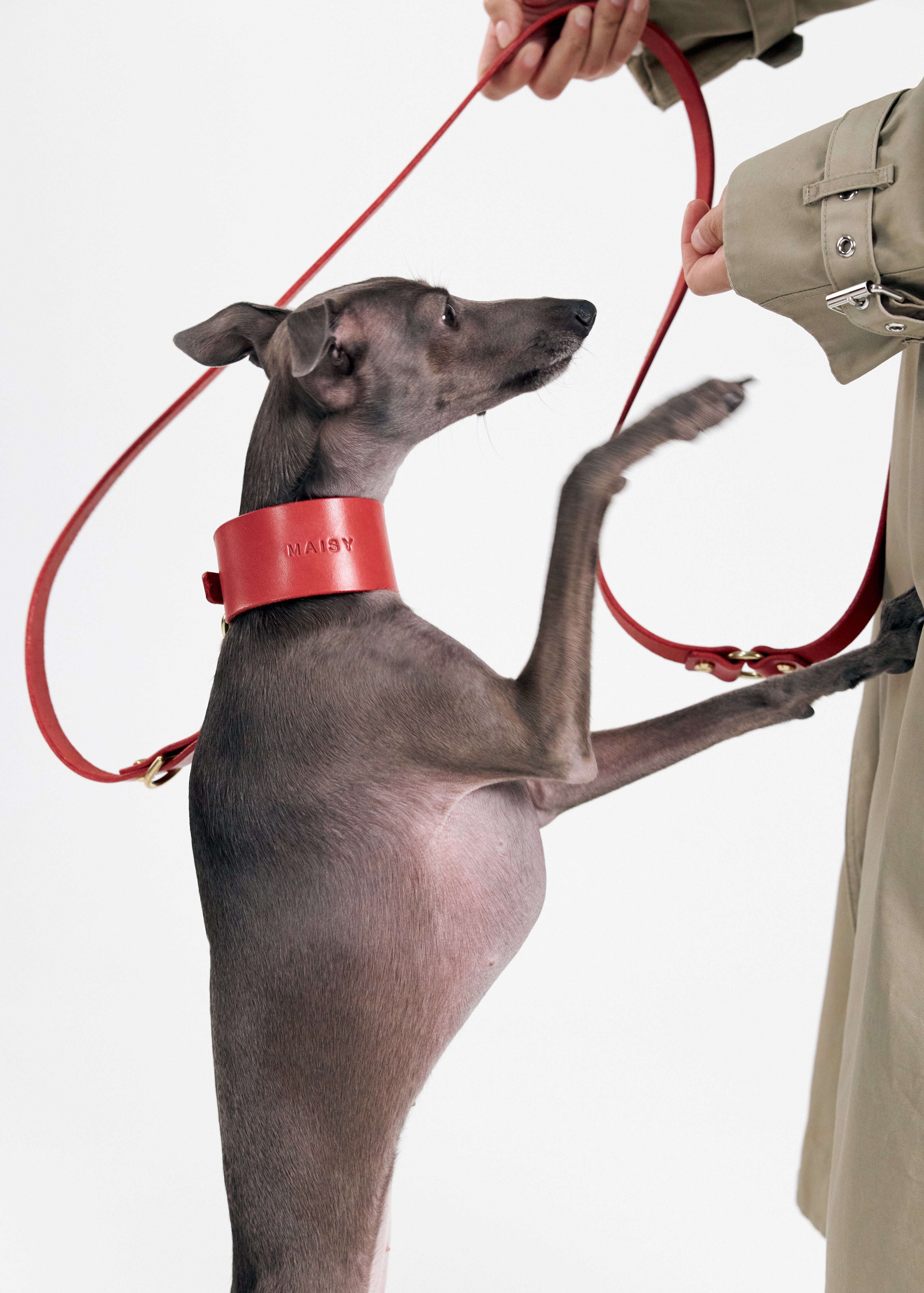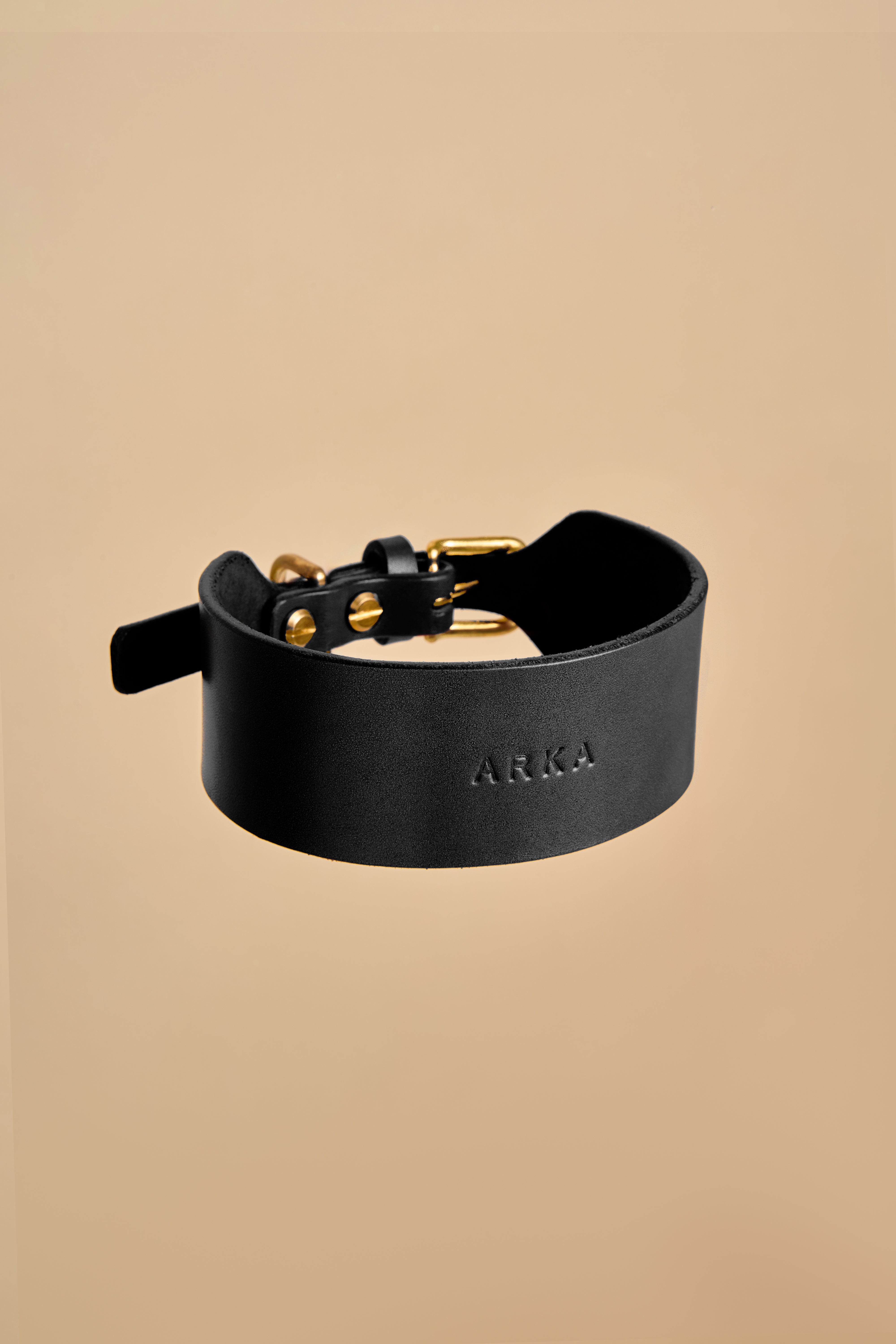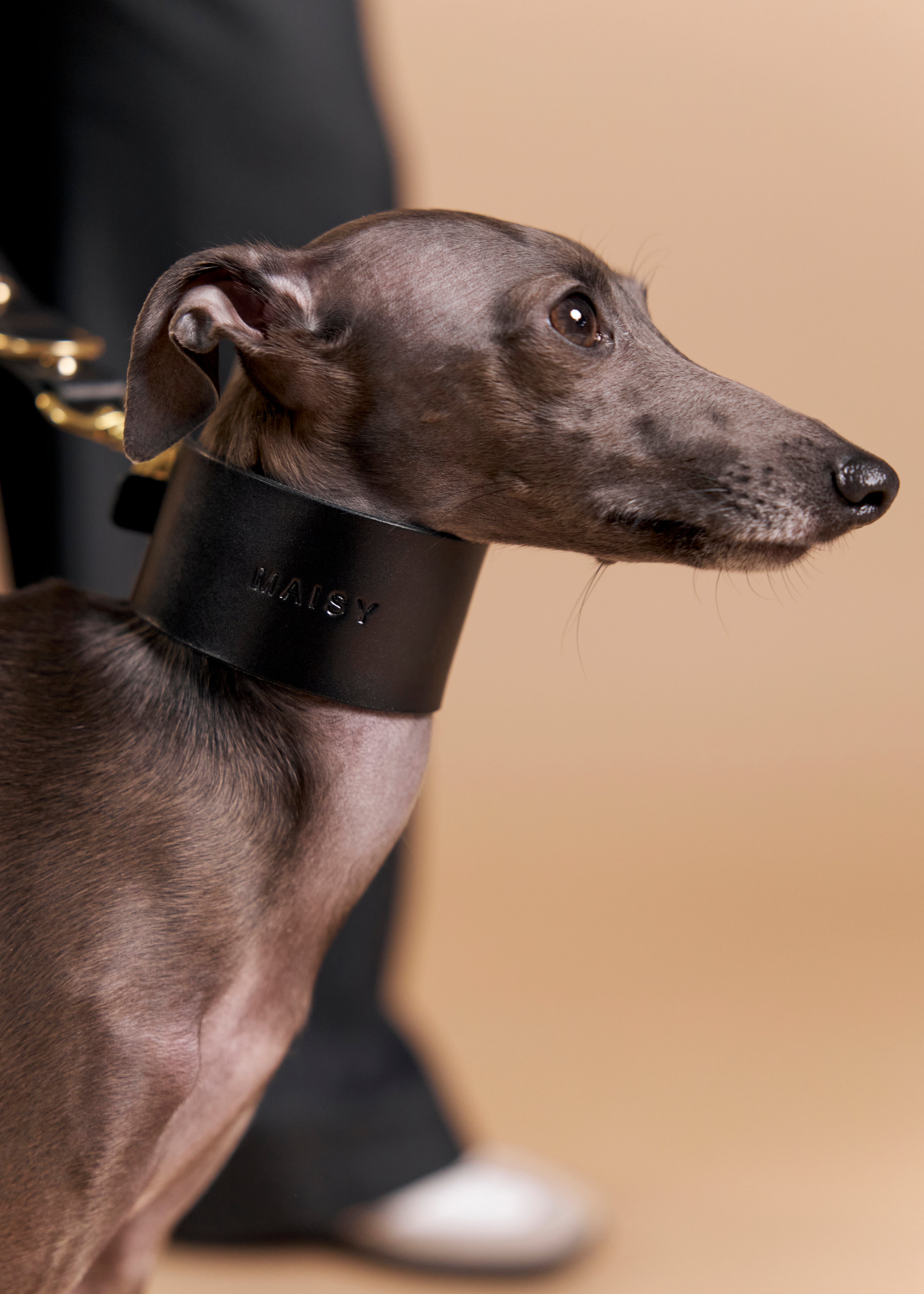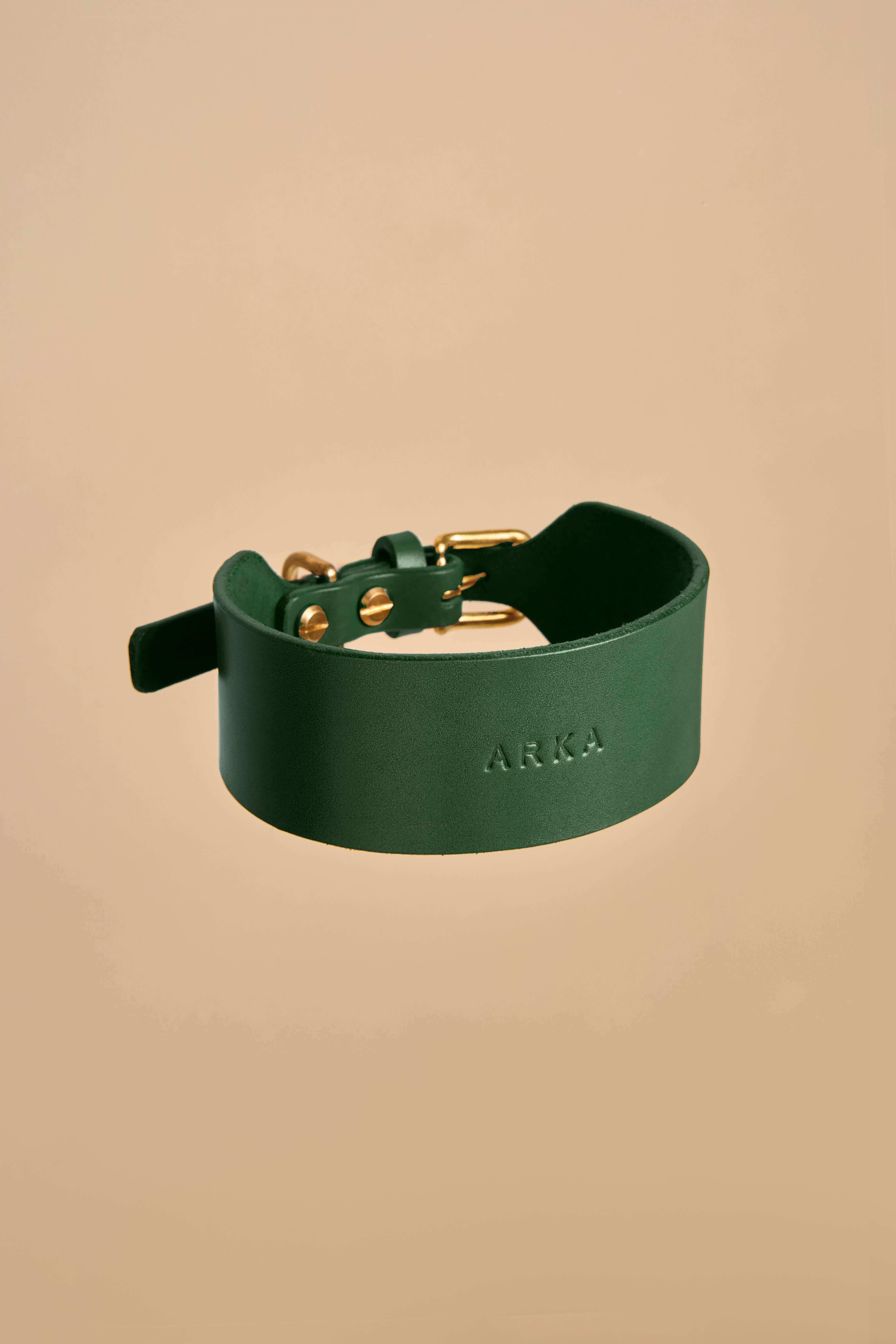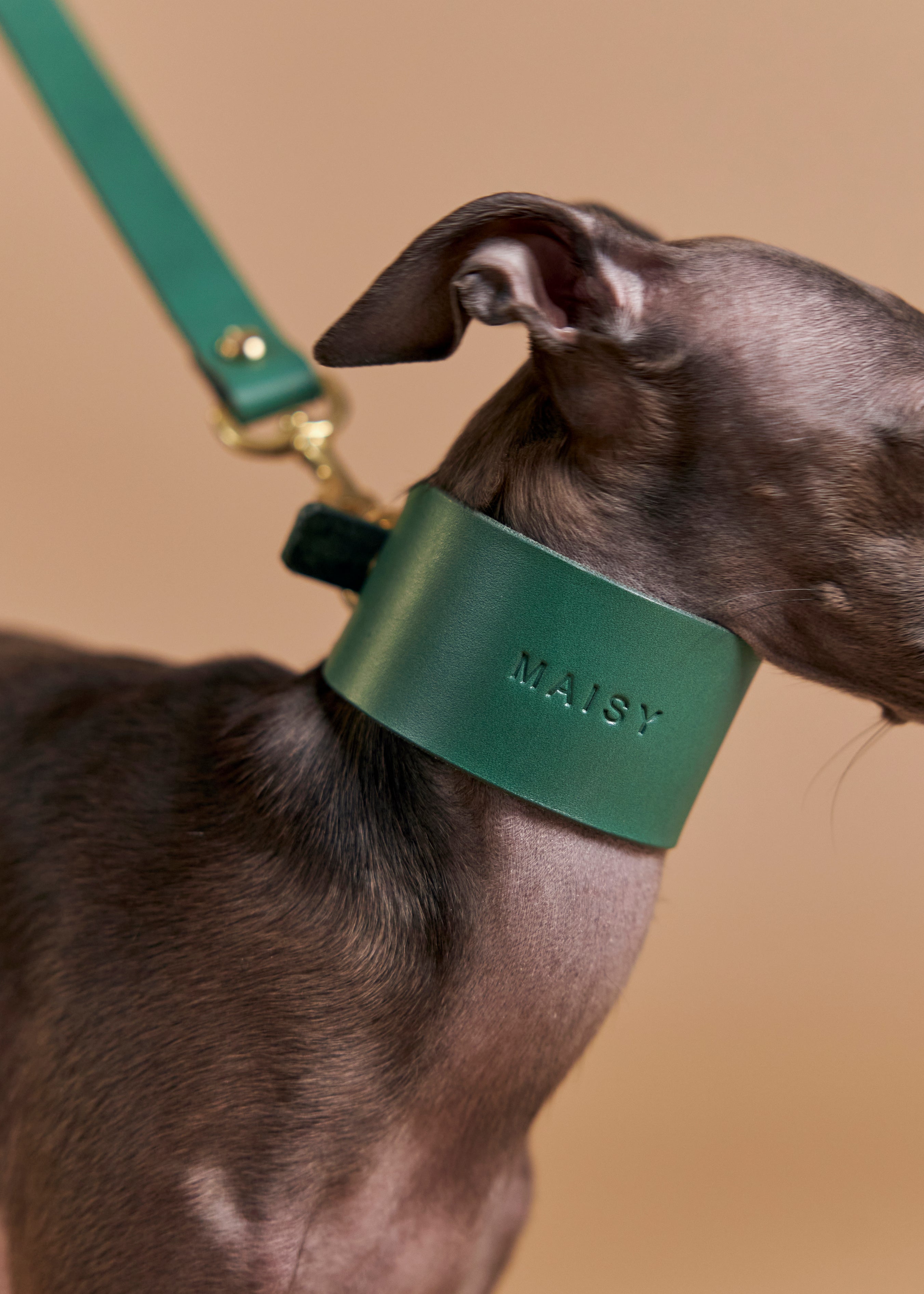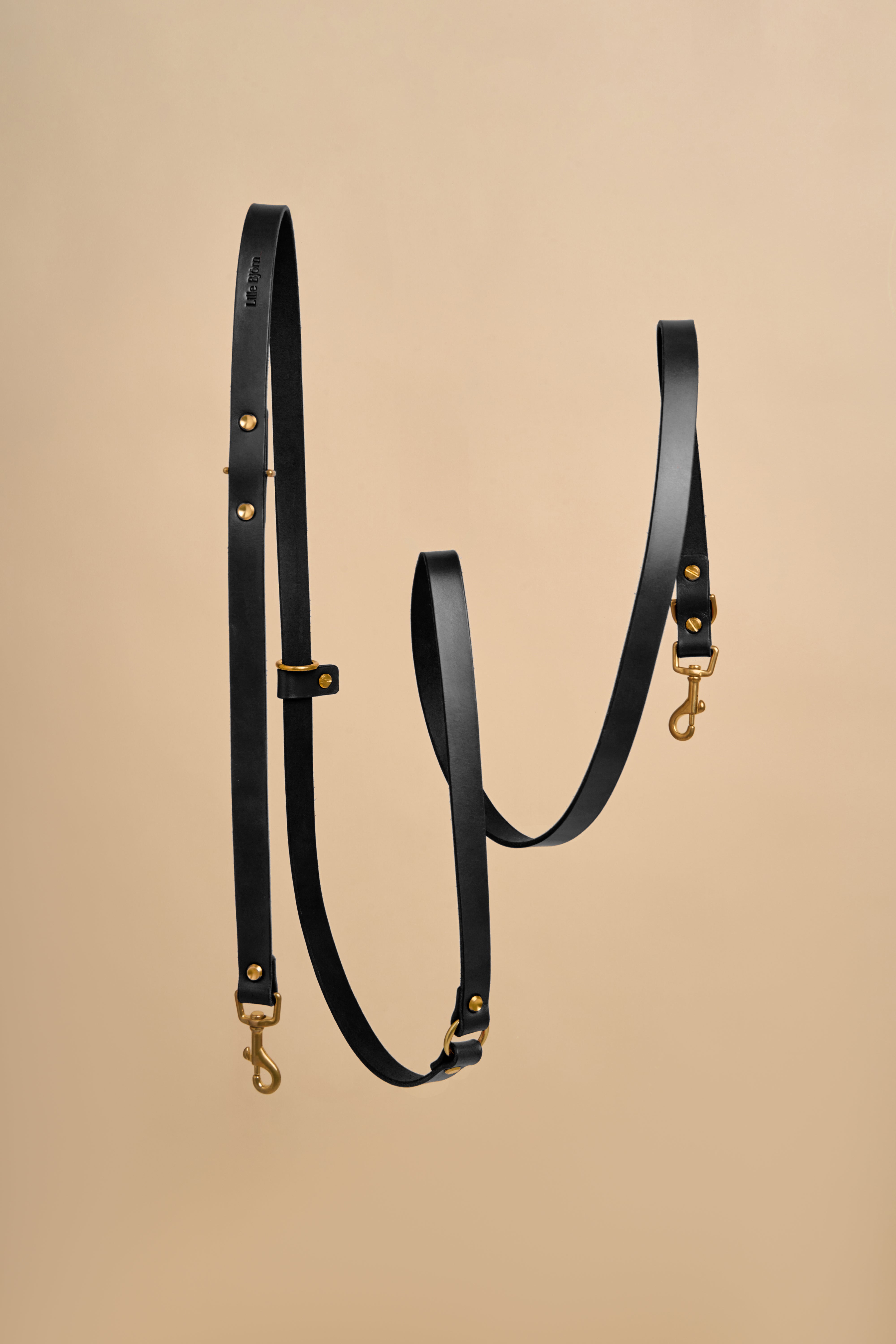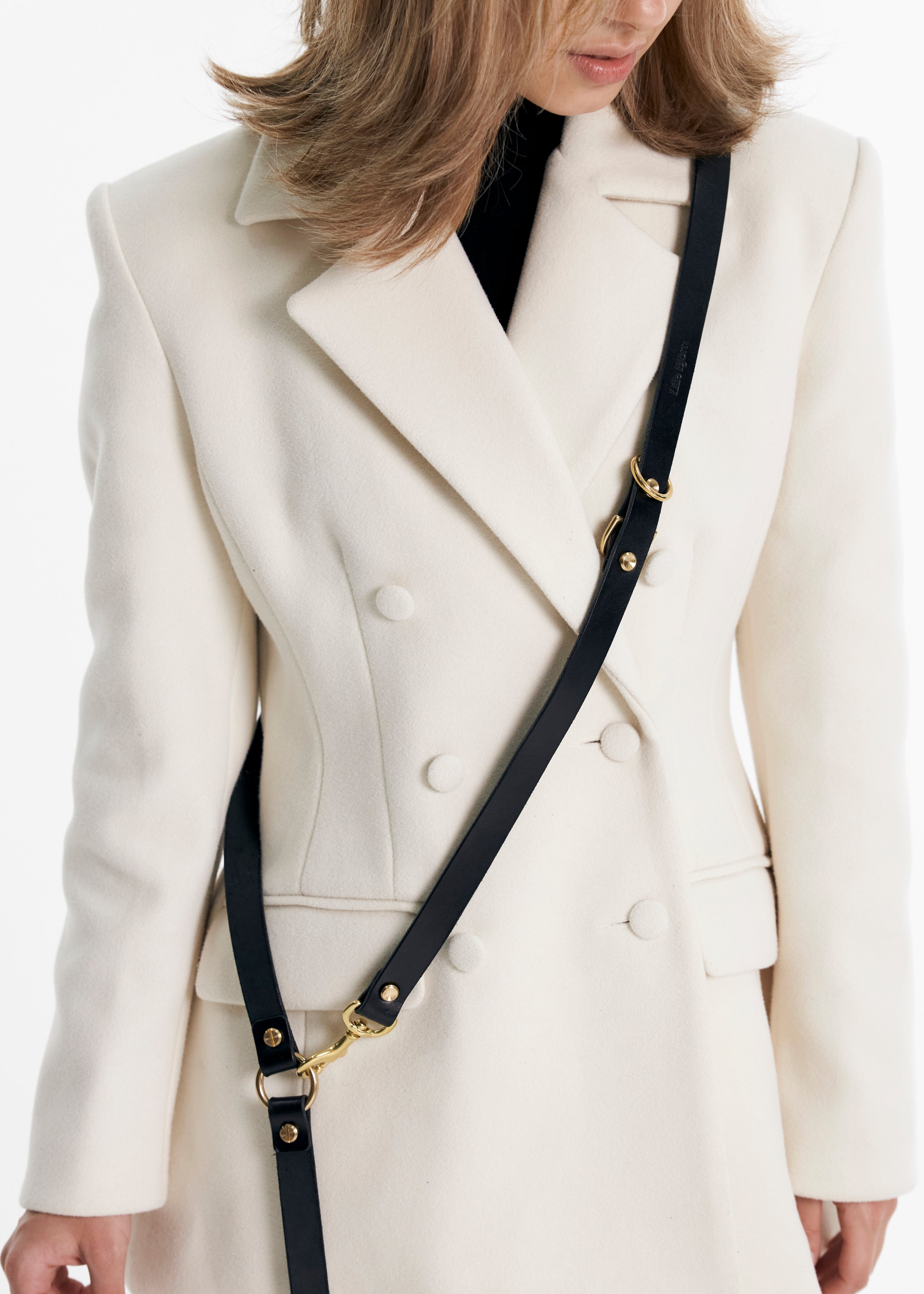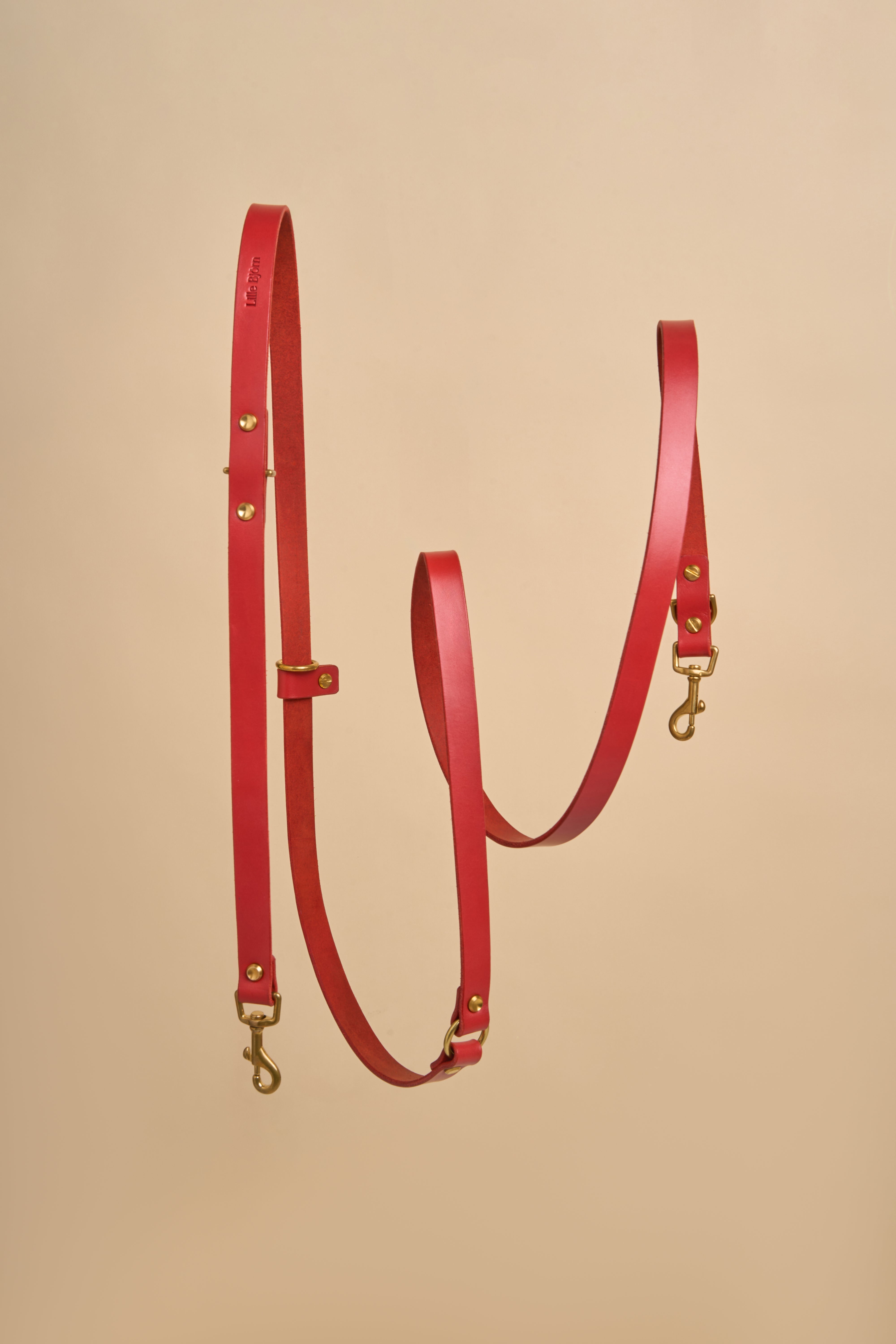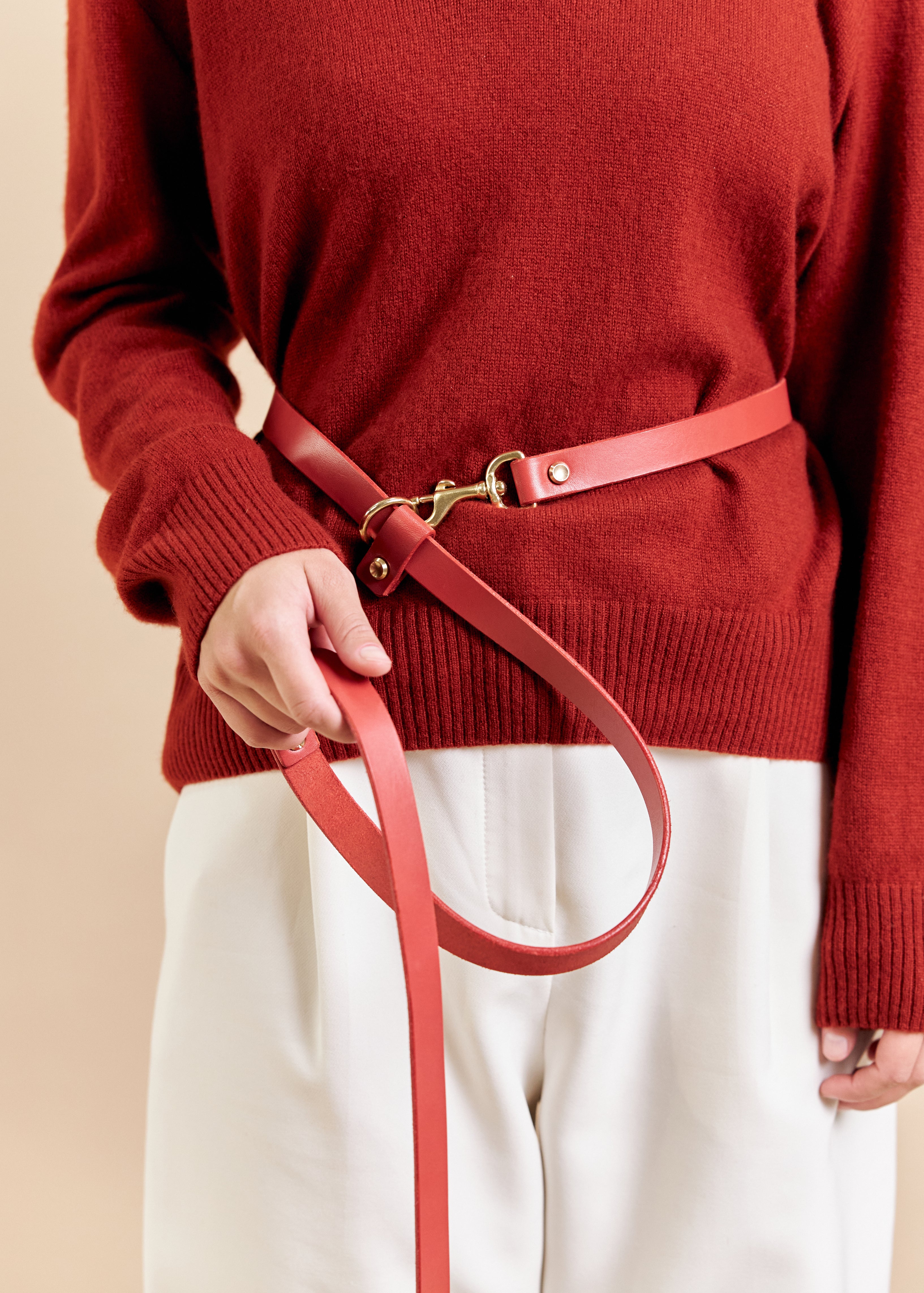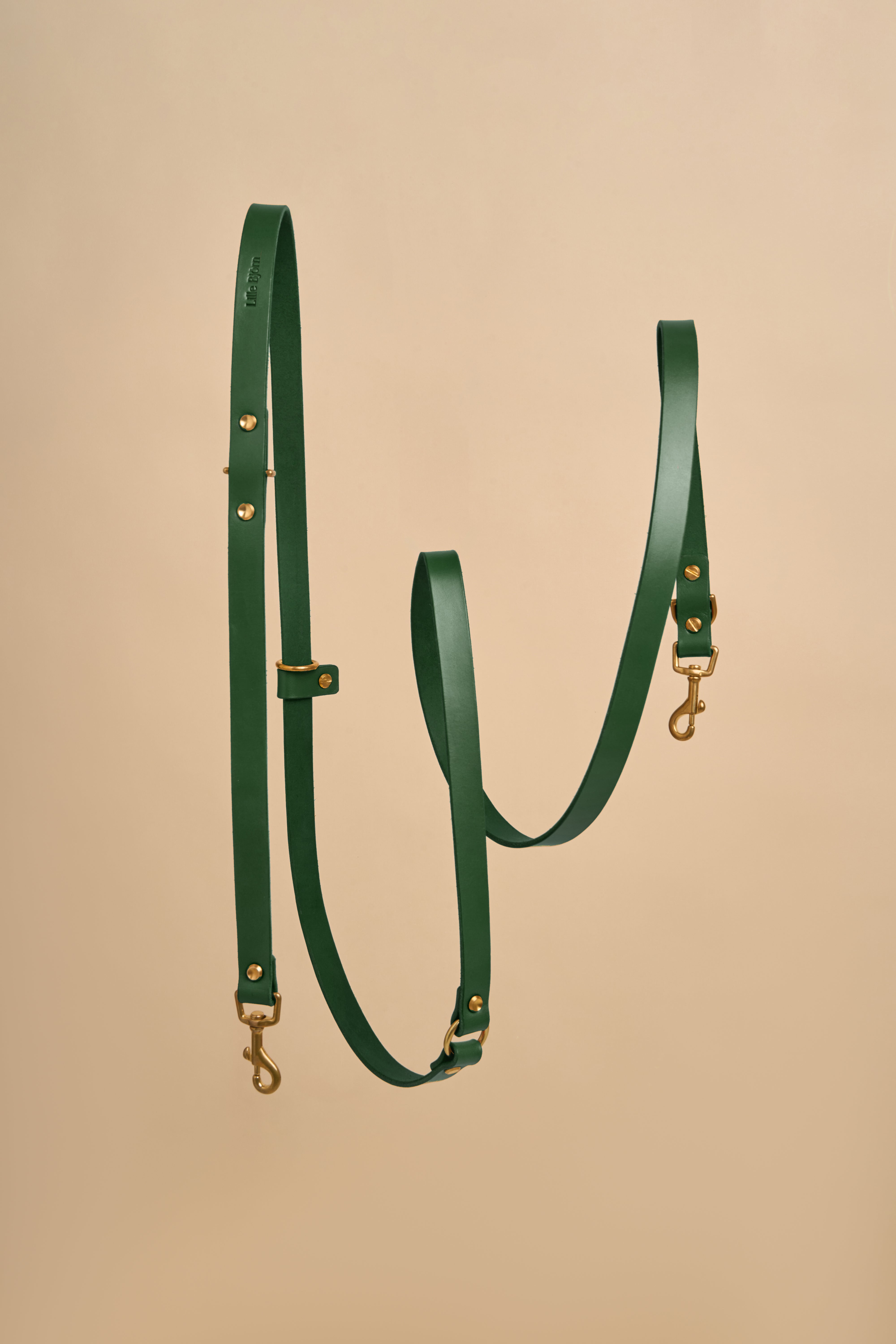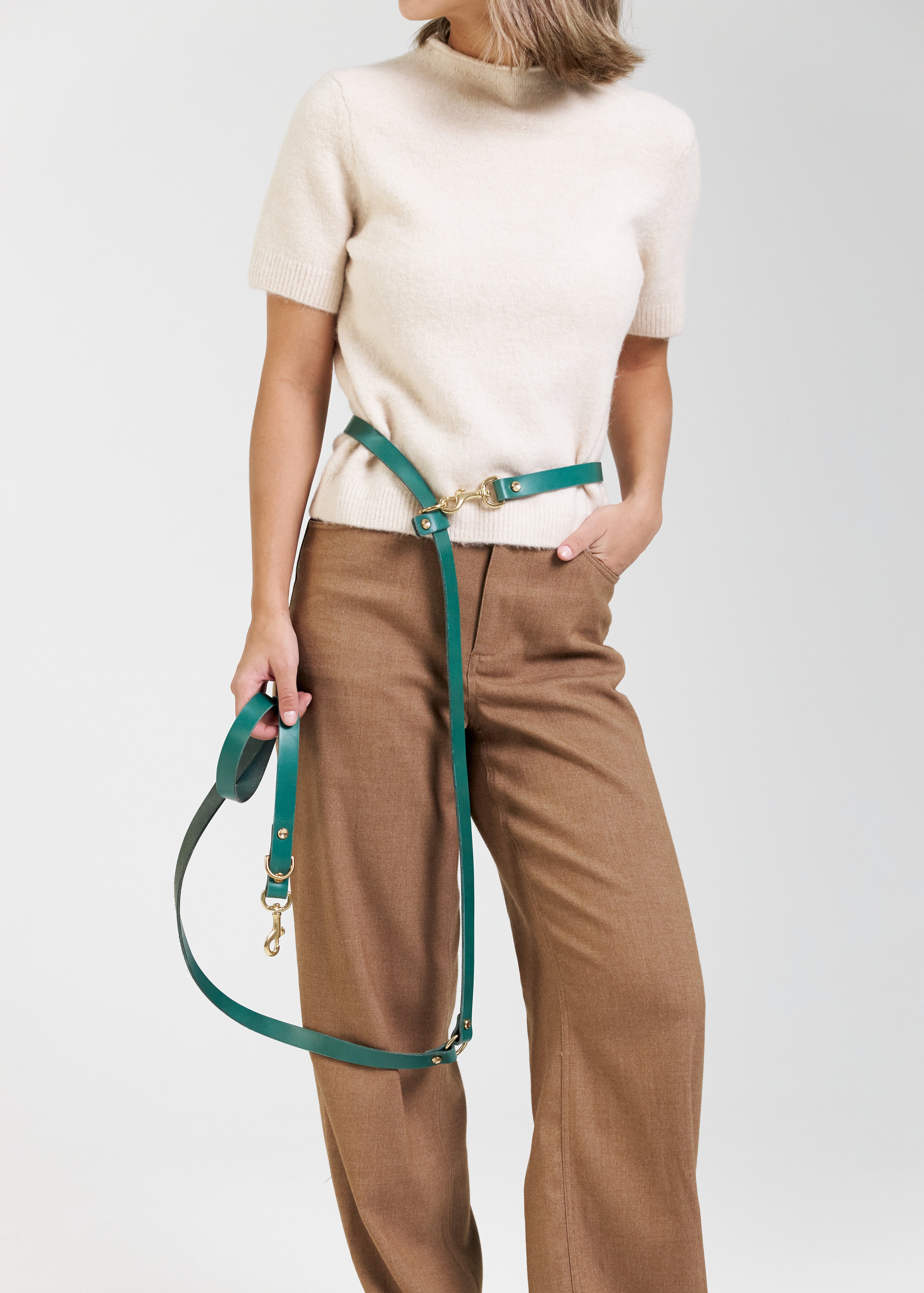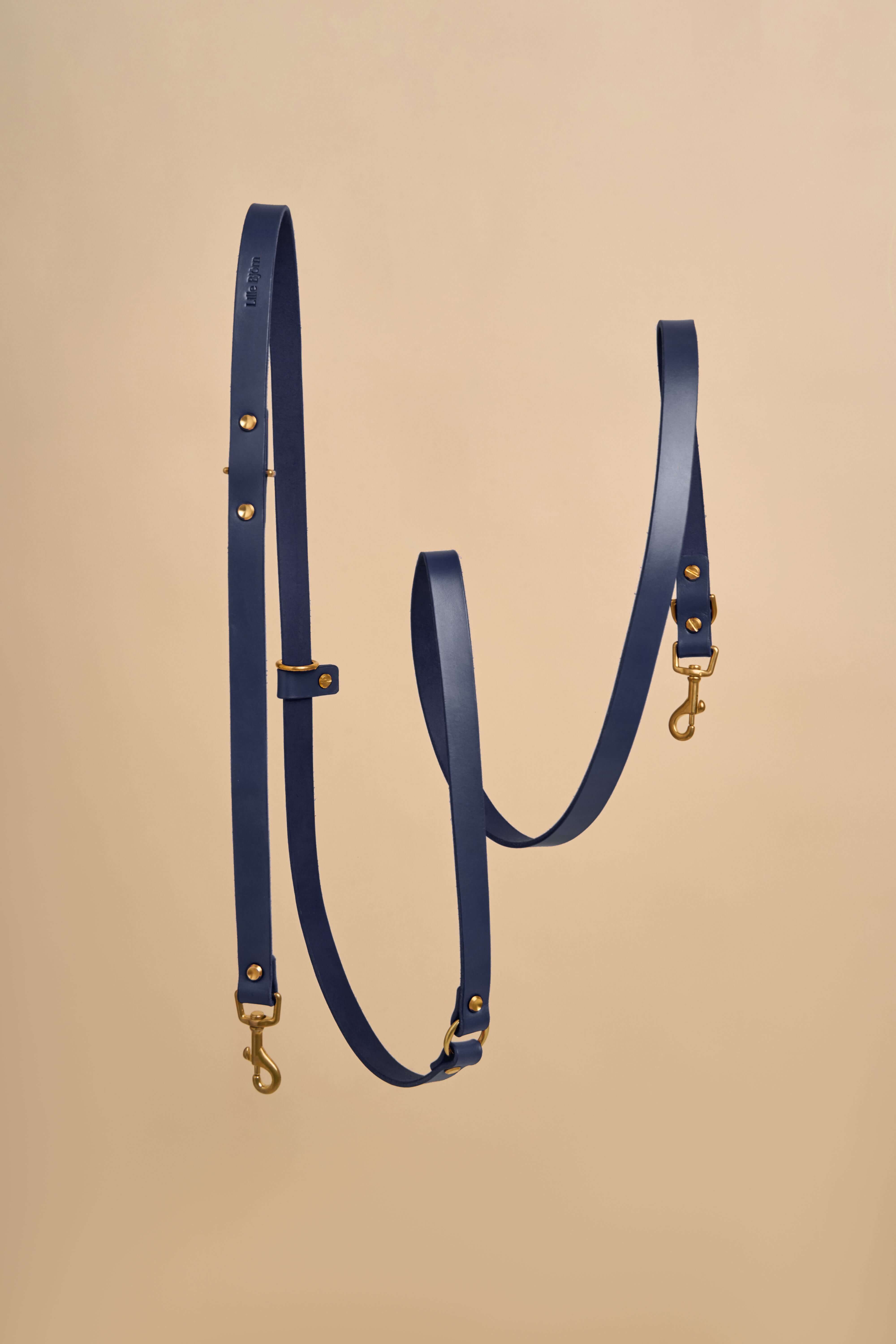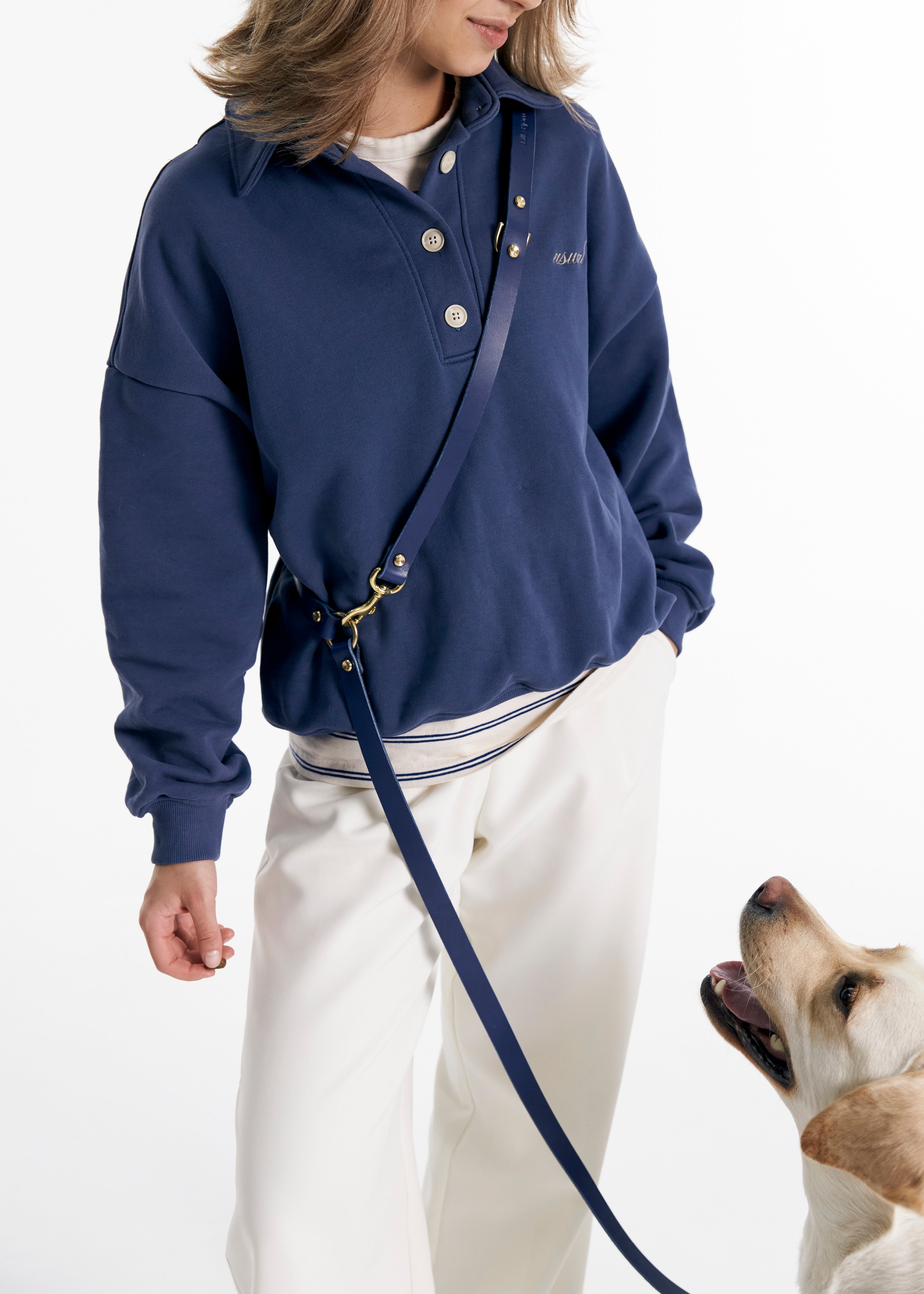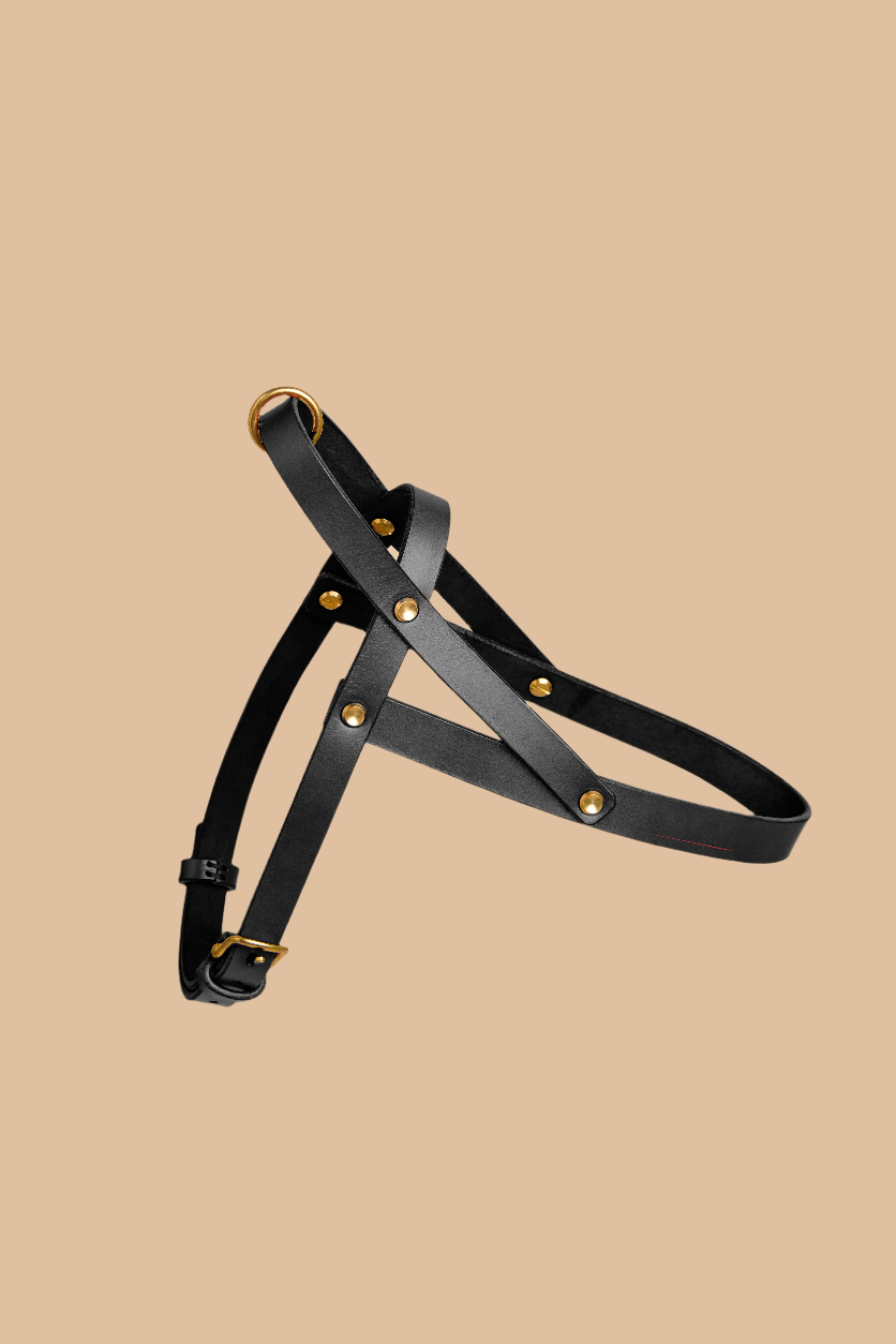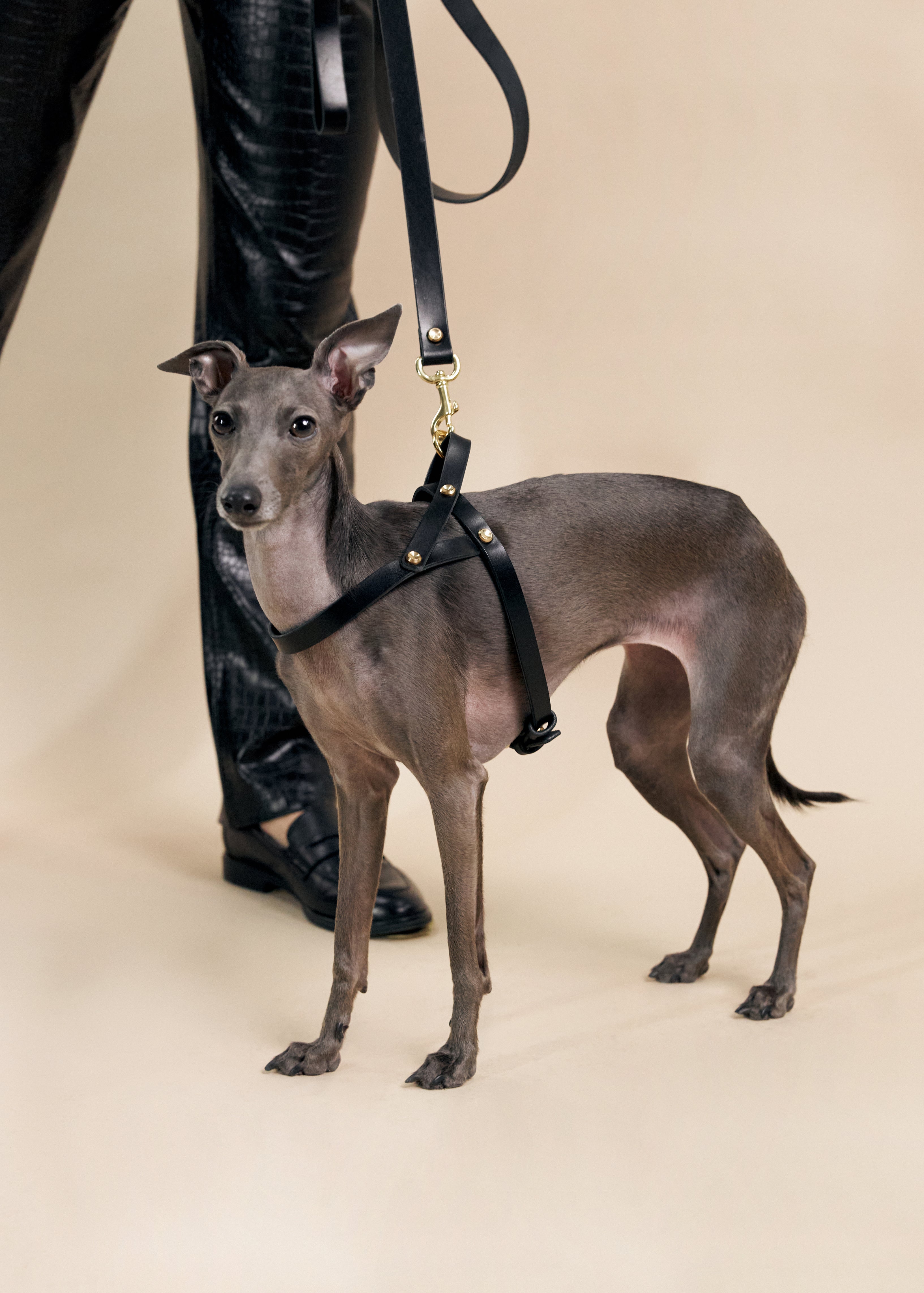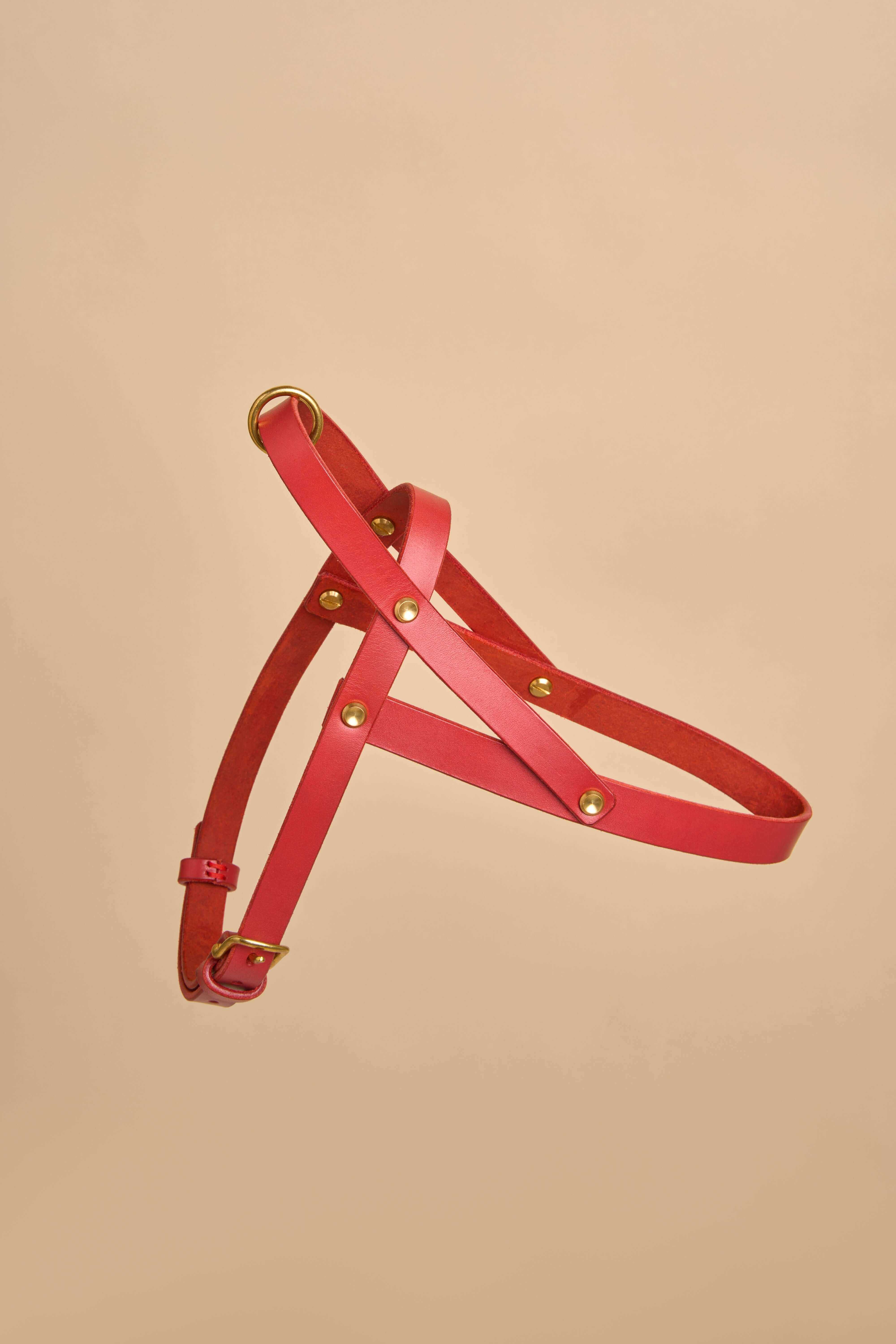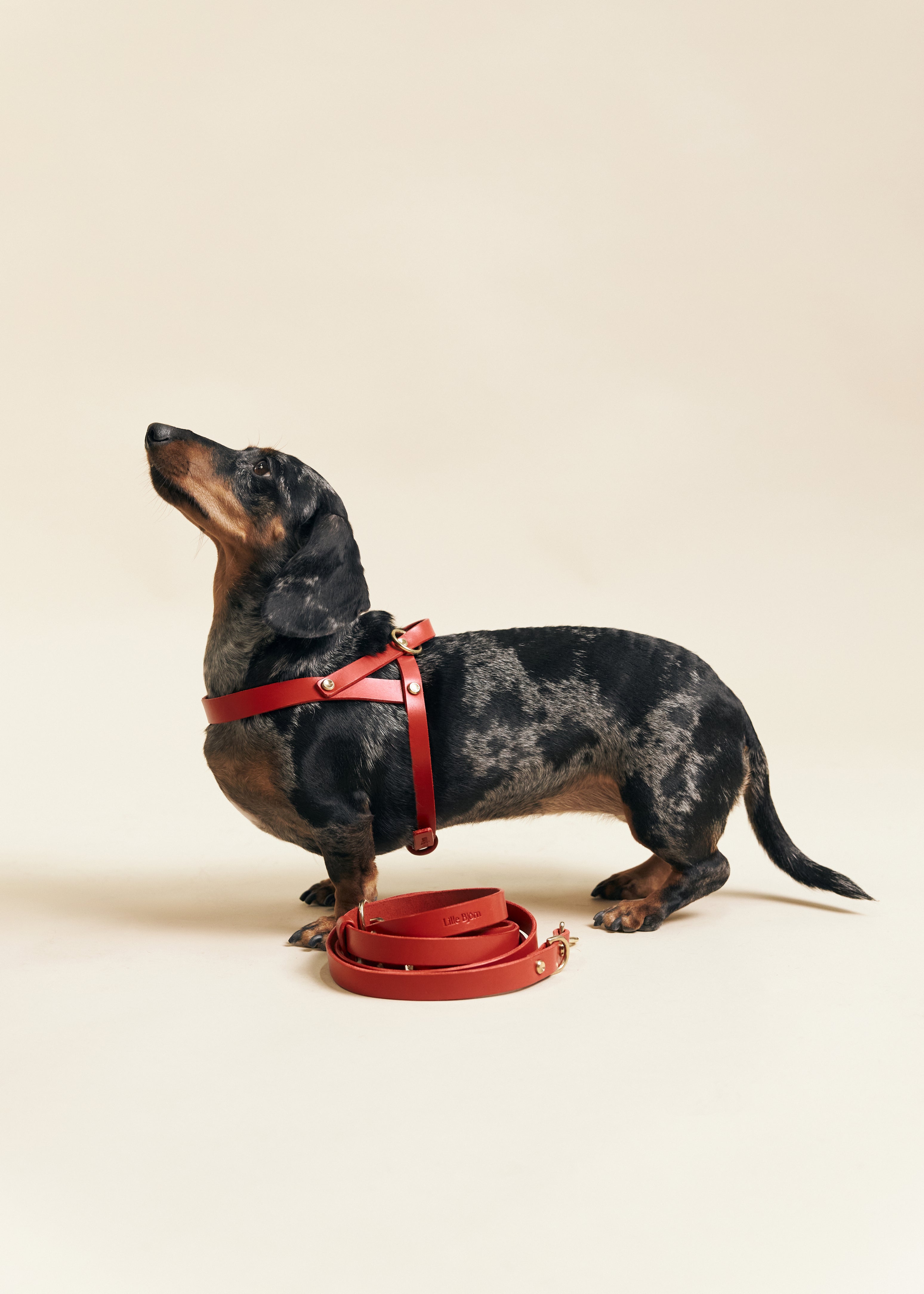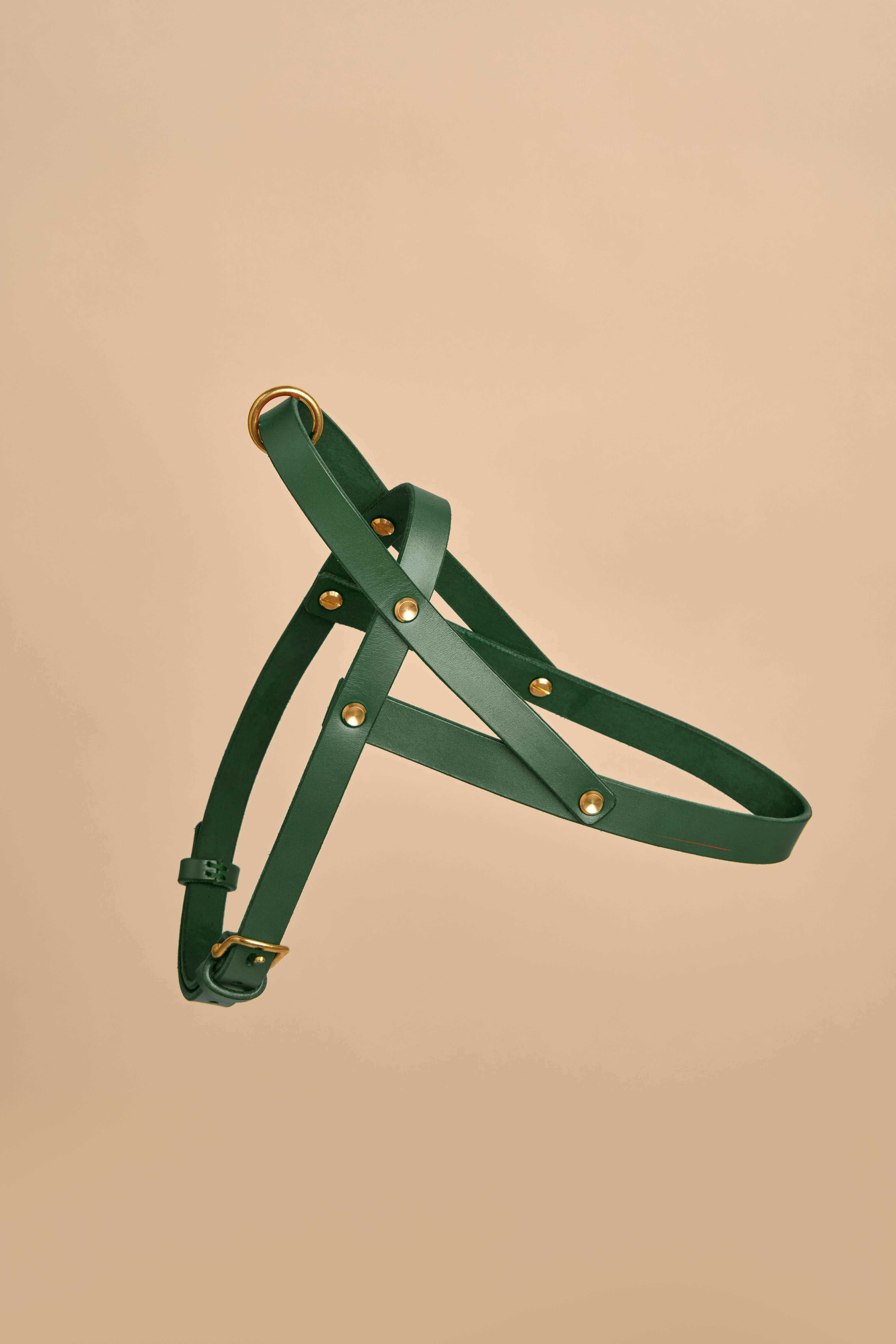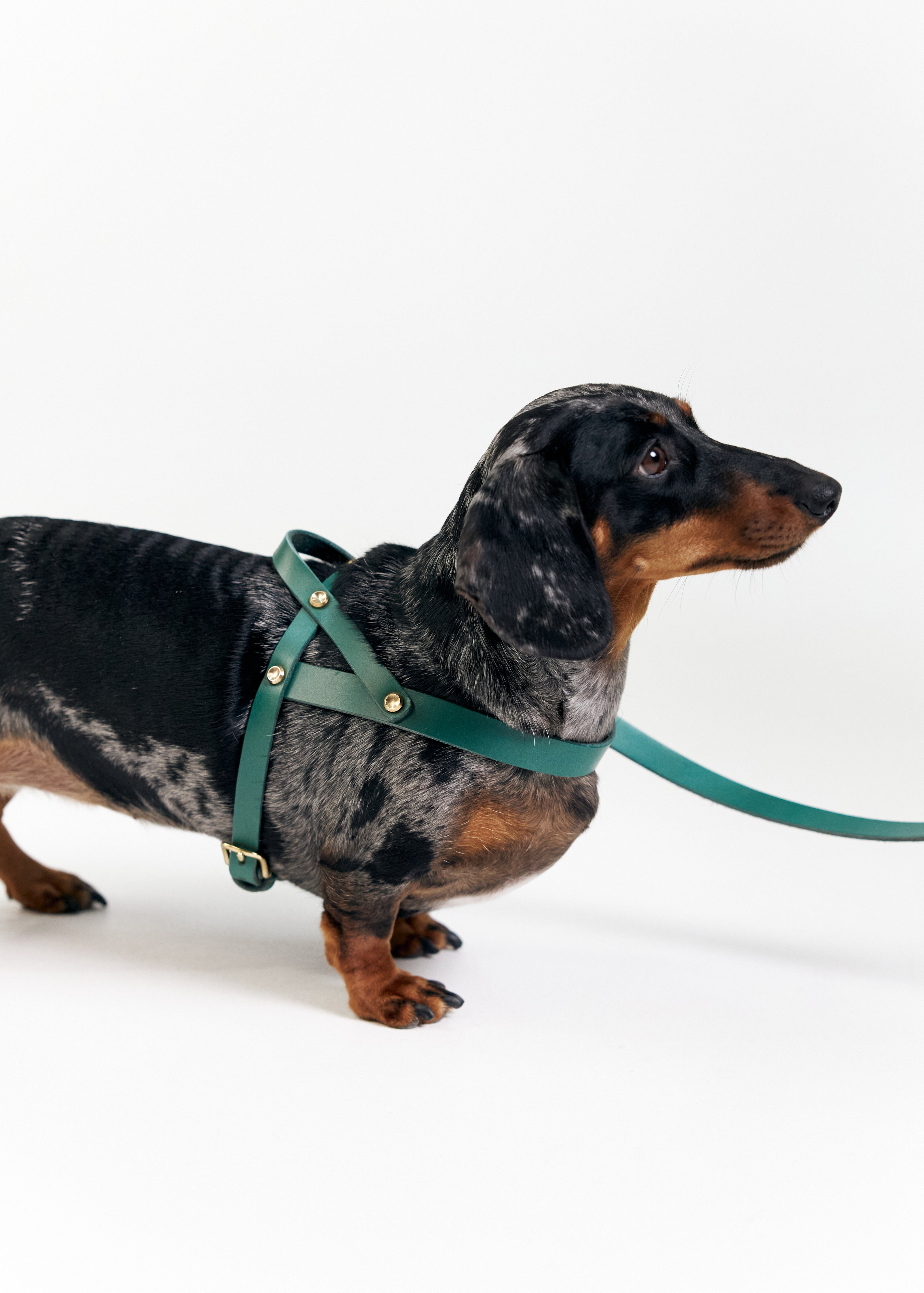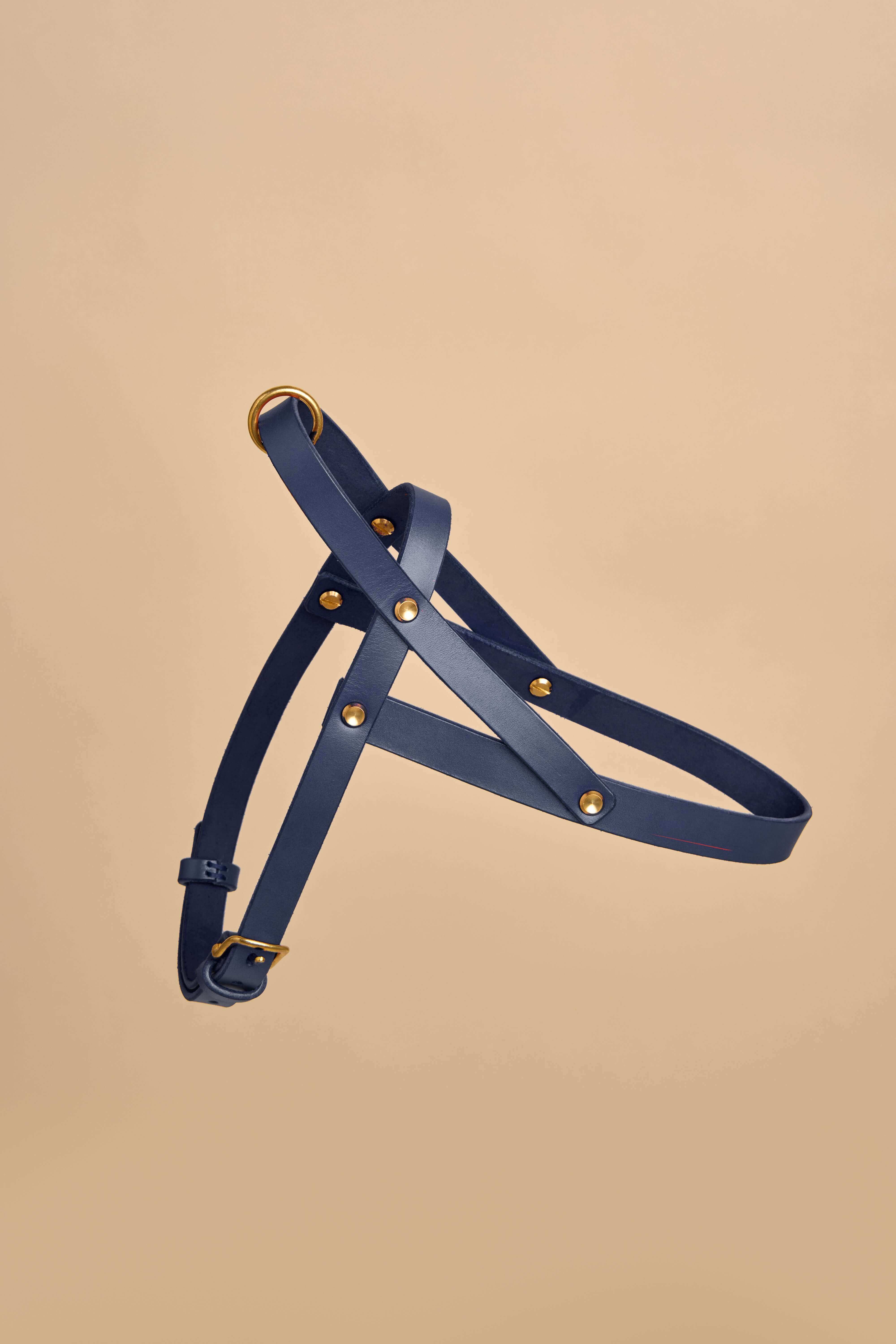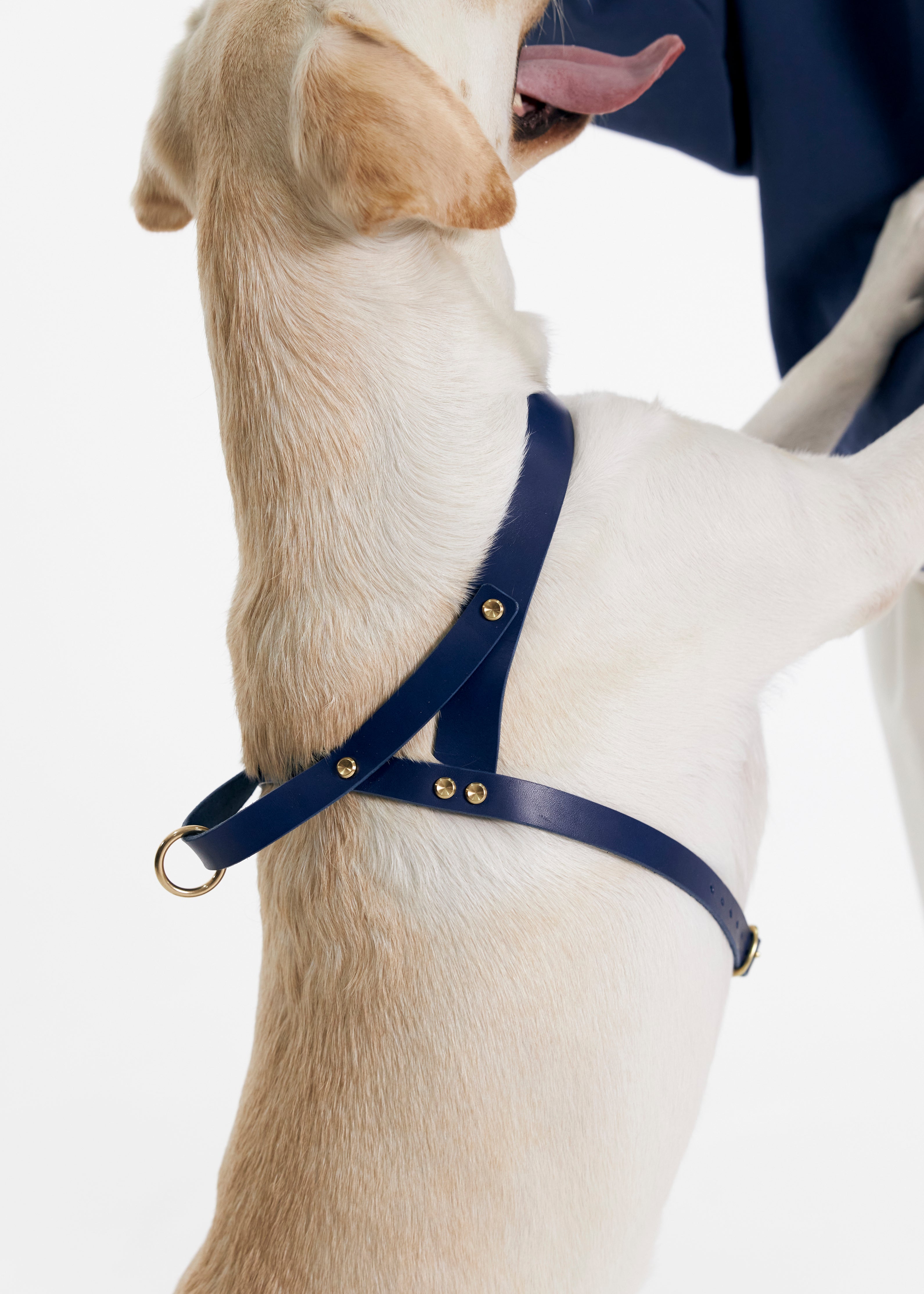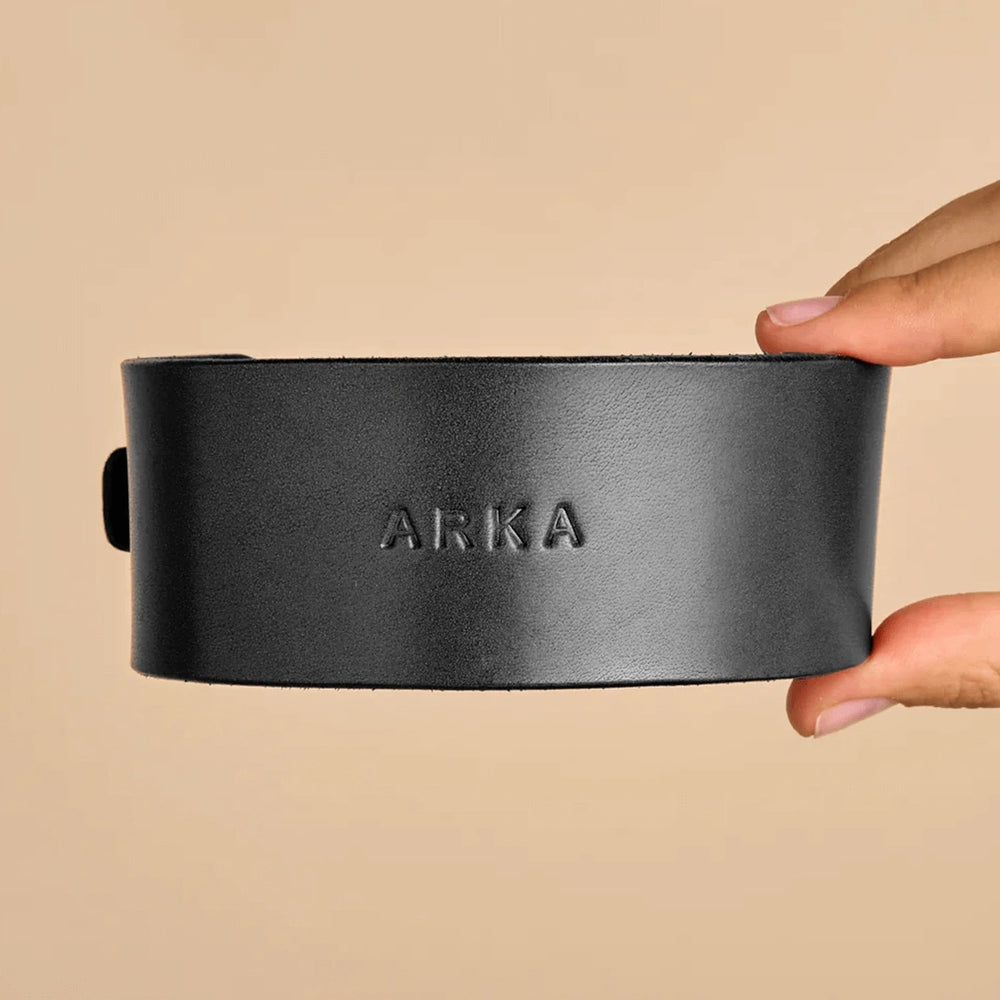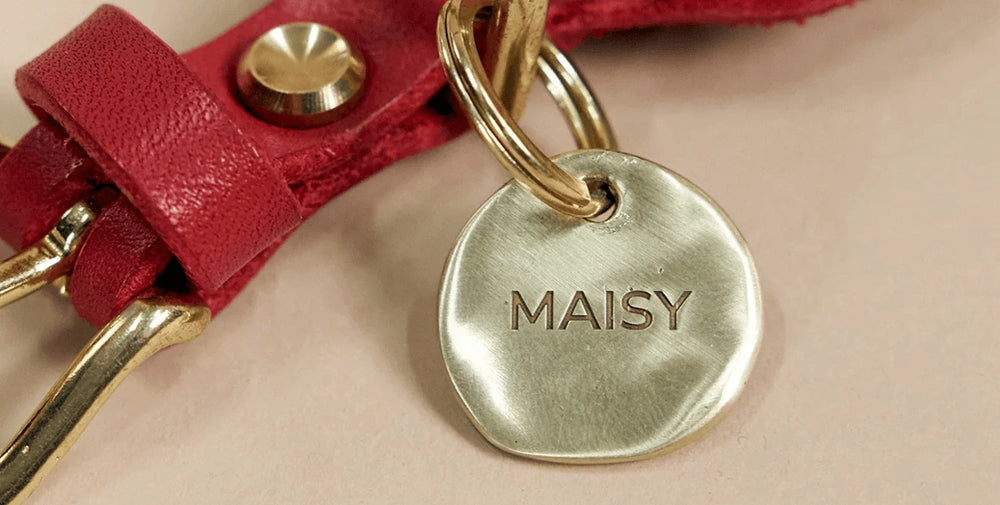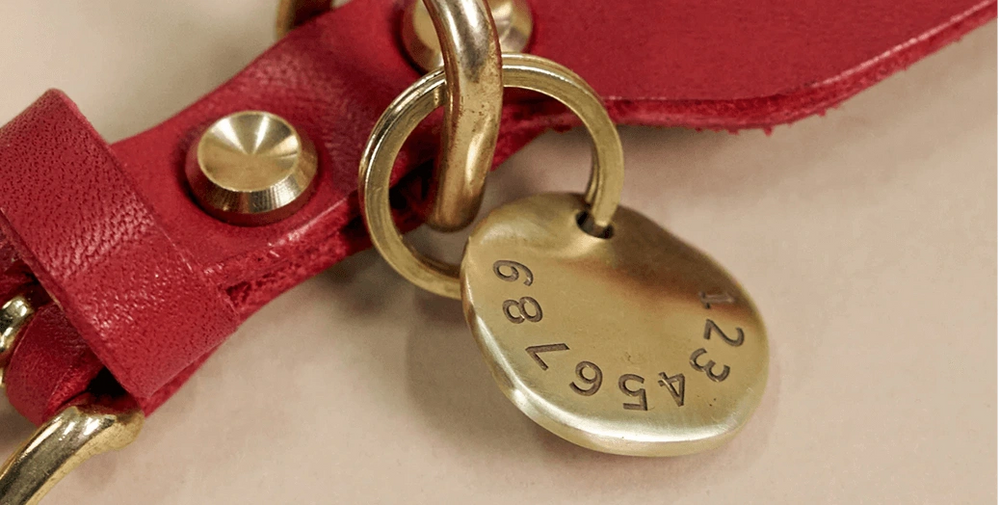For your dog’s comfort and safety, a properly fitting collar is a must have. Poorly fit dog collars can lead to several problems, including chafing and discomfort, as well as accidents if the collar slips off your dog’s neck. This guide presents a step by step process for measuring your dog for the perfect fit, especially for leather dog collars. You’ll also get tips and tricks for avoiding the most common sizing mistakes and pairing the collar with matching accessories, such as dog leashes and dog leads. There’s also some advice for choosing a collar for specific breeds. Keep reading for everything you need to know.
Why Accurate Measurements Matter
Finding the right fit is important and you’ll know you found it when your dog’s collar fits snugly enough to stay in place, but not so tight that it’s uncomfortable. When you select the best leather dog collars, finding an accurate measurement for your pet ensures the best function. It also prevents the following issues:
- Escaping: when your dog’s collar is too loose, there’s a risk that they will slip out and run off during a walk or when you’re outside to play.
- Discomfort: if a collar is too tight it restricts your dog’s movements and can cause irritation, chafing, and trouble breathing.
- Health concerns: a collar with an improper fit can lead to sores, hair loss, and damage to your pet’s trachea.
As you can see, securing your dog’s collar properly isn’t just a matter of safety. It’s also a matter of their overall health. For the best quality of life for your furry friend, it’s absolutely vital that you take the time to ensure a proper fit when you choose from the many dog collars on store shelves.
Tools You’ll Need
Having the right gear on hand makes it super easy to measure your dog’s neck for the proper fit for its collar. Below is everything you need to get the job done right.
- A flexible measuring tape, ideally made from fabric.
- A piece of string.
- Pen and paper to write down your measurements.
If you feel like your dog’s current collar offers a great fit, you can simply remove it and measure it. Use that number to guide you as you shop for a new collar. When you measure an existing collar, be sure you do so by excluding the buckle, which gives you the most accurate measurement.
Step-by-Step Guide to Measuring Your Dog’s Neck
Now that you’ve gathered your materials, you’re ready to work through the steps required to get an accurate measurement of your dog’s neck. Read through them below so that you know what to expect when it’s time to get started.
Step 1: Identify the Proper Placement
Start by finding the base of your pet’s neck. This will be just below the dog’s head and just above its shoulders. This is where the collar will naturally rest when it’s worn. If your dog has long or thick fur, you can gently pat the fur to locate where the base of its neck is.
Step 2: Use the Measuring Tape
Once you’ve located the base of your pet’s neck, use the fabric tape measure to wrap it around the area. Make sure that the measuring tape lies flat against your pet’s neck, without any twisting, which can interfere with a proper measurement. Use these additional tips:
- Don’t pull the measuring tape too tight, which can lead you to buy a collar that is too small.
- There should be enough room under the tape measure, which allows for a secure, but comfortable fitting collar.
Step 3: Check the Measurement
To ensure that you avoid mistakes, double check your measurements. Record the number you get so that you can come back to it as a reference if you buy your dog a new collar. This information is also useful to account for the variations in measurements for various dog collar brands.
Step 4: Consider the Collar Type
Different types of collars, including the leather dog collars here at The Lille Bjorn, often have specific sizing requirements. Make sure you understand the product details so you know whether you need to take additional measurements for the type of collar you choose.
Tips for Ensuring a Snug Fit
A snug fit is a vital part of finding the right dog collar, both for comfort and safety. Use these tips to help you get the job done.
Tip 1: Account for Fur Thickness
If you have a breed known for its thick fur, such as a Husky or Golden Retriever, take into account the compression of their fur when you measure. Measure where the fur naturally rests and be prepared to make adjustments for the seasons, when fur may fall out or thicken.
Tip 2: Check Fit Regularly
Dogs may grow, lose weight or gain weight as seasons change and as they age. For that reason, it’s recommended to check dog collars regularly to make sure they stay comfortable and snug. Puppies will require frequent adjustments, so be sure you are monitoring their collar’s fit consistently for both safety and comfort.
Tip 3: Test with a Walk
Before you confirm that you’ve found the right dog collar, test it with a dog lead or dog leash. Take your dog for a short walk and observe how the collar rests against its neck and how the fit looks with movement. Be sure it doesn’t slip, twist or cause your dog discomfort during movement.
Sizing Examples for Various Breeds
Different dog breeds are shaped differently and are various sizes. This reinforces how vital it is to get an accurate measurement for your pet’s collar. Below are some examples that should provide understanding on some common breed-specific requirements.
Small Breeds (e.g., Chihuahua, Dachshund)
Small dog breeds should wear thinner collars that are petite in size. Smaller dogs may only have a neck circumference of 8 to 14 inches, so lightweight genuine leather dog collars are an outstanding choice for these breeds.
Medium Breeds (e.g., Beagle, Cocker Spaniel)
With a neck circumference of 14 to 20 inches, medium sized dogs do very well with real leather dog collars, with mold to their shape and create a customized fit over time. For medium sized dogs, you want a moderate width of dog collar, that offers comfort, but is also durable.
Large Breeds (e.g., Labrador Retriever, German Shepherd)
You will need high quality leather dog collars that are wider and thicker. This promises to accommodate both the dog’s size and activity level. Most dogs that fall into this category have a neck circumference between 18 and 24 inches.
Giant Breeds (e.g., Great Dane, Mastiff)
Most giant breeds have a large neck circumference, some of which exceed 30 inches. Again, premium leather dog collars make an outstanding choice for these breeds, with wide and thick collars offering the best in strength, durability and comfort.
Avoiding Common Sizing Mistakes
Even when you carefully measure your dog’s neck size, there is still the potential to make a mistake. Knowing what they are is the first step in taking action to prevent them. Here are some of the most common:
Mistake 1: Guessing the Size
It’s never a good idea to estimate your dog’s neck size. You need to use a measuring tape for the best accuracy, something that is also important when buying dog harnesses, dog leads and dog leashes as well.
Mistake 2: Ignoring Sizing Charts
Brands vary in size and fit and may have varying sizing charts for their dog collars and accessories. Make sure you compare the measurements you take with the collar’s sizing guide to ensure that you are buying the correct size for your beloved pet.
Mistake 3: Not Considering Adjustability
Sometimes your dog’s measurements may be in between two sizes. In that case, it’s best to buy the larger size, but be sure it can be adjusted. Look for multiple adjustment holes so that you can still get the best fit for your pet.
Mistake 4: Overlooking Activity Levels
Active dogs have specialized needs when it comes to getting the right fit for their collar. You may want to consider buying a padded or extra flexible collar so your pet has plenty of room to move around and play. In this case, it’s always a good idea to test the collar in a real-world environment, such as attached to a dog leash for a walk around the block or with a lead for a training session.
Why Leather Collars Are a Great Choice
Leather dog collars that provide a snug fit for your dog offer a wide range of benefits. They include the following:
- Durable
- Comfortable
- Stylish
Consider pairing your dog’s collar with the matching leash and harness for the best fit and for a stylish way to spend time out and about with your beloved pet.
Conclusion
It’s important to get an accurate measurement for your pet’s collar, which ensures both comfort and safety. This guide gives you tips and ideas for getting the right numbers, guiding you to the perfect collar for your dog. Accurate measurements, along with real leather dog collars, give a snug fit that optimizes function and comfort. You’ll never be sorry you took the time and effort to get the task done well.
